- Palestine (based on 1967 border, excluding special episode for Jerusalem)
- Producer and Primary Host: Charles Huang
- Guest Host: Bobo Alami
- Comprehensive Full Episode
- Running Time: 50 minutes 30 second
- Filmed: November 2015
- Sponsor: Hostel in Ramallah (Accommodation and Logistics)
- Supporting Team: Ashram Bakri for Jericho (Auberg Guesthouse Inn – House of Eggplants)
- Premiere Date: Tuesday April 12, 2016
Table of Content:
- Episode Background
- Personal Message to Our Friends in Israel
- History and Political Status
- General Information and Holidays
- Al Walaja
- Breakfast at the oldest olive tree in Palestine
- Bethlehem
- Church of the Nativity
- Aida Refugee Camp
- Hebron
- General Note
- Getting here
- Cave of the Patriarchs / Ibrahimi Mosque
- Al-Shuhada Street
- Arabic Coffee and Street Foods
- Jenin
- Getting Here
- The Old City and The Market (Suq)
- Freshly Grilled Kabab
- Cinema Jenin Project & Guesthouse
- Burqin
- St. George Church
- Sebastia
- Israeli Ministry of Tourism Propaganda leaflets
- Sebastia Archaeological Park
- Village of Sebastia
- Nablus
- Getting here
- Aslan Tiles and Mosaic Factory
- Old City Market (Souqs)
- Nablus Soap Factory
- Hamam Al-Shefaa Turkish Bath
- Street Food: Ara’yes (Bribes)
- Sweet Treats:
- Zalabia Kari
- Halva
- Kunfa
- Kolaj
- Sama Nablus Gardens
- Jesus Path to Jericho
- Getting in
- St. George Monastery
- Wadi Qelt
- Jericho
- Herod’s Palace (Tulul Abu el-Alayiq)
- Hisham’s Palace (5 KM in Khirbat al-Mafjar)
- Jericho Cable Car
- Mount of Temptation and Monastery of Temptation
- The Dead Sea
- Bi’lin
- Ramallah
- Arafat Tomb
- Mahmoud Darwish Museum
- Rukab Ice-Cream
- Nightlife
- Best Falafel
- Al-Manara Square
- Transportation Hub
- The Inn of the Good Samaritan
Episode Background:
Palestine is one of the most complicated, but rewarding episode. The background behind this episode was complicated but extremely rewarding. The plan was just to do a DIY Destinations episode jut focus on Israel. However, given the existing conflicts involving disputed territories for Jerusalem and the West Bank. I am not able to do a episode on Israel without Jerusalem. I also can not feature Jerusalem without Palestine, as it is claimed both Israel and Palestine as their capital. I do not want to take position on either side. The episode was evolved into “Holy Land” episode, which combined all of must see attractions on both side without mentioning “Israel” or “Palestine”, eventually given many factors, the episode was split into three, first being Jerusalem, second being this episode focusing on undisputed area of Israel and third being all of West Bank referred as Palestine. There was problem right from the beginning, such as between myself and Israeli authorities, such as editorials, conditions for financial support, use of names (e.g. use of Palestinian Territories rather than Palestine), where I can visit in Palestine. In the end, I decided in the end that its important not be bounced to any agreements that potentially turn the show into a propaganda piece. Our position is the Palestine are defined in pre-1967 border recognized by the United Nations and the international community. We will fellow the international law and do not recognized Israel’s claims of West Bank or the rights to tell our program what to do in a sovereign country. Therefore, all of the West Bank including the Israeli settlement will be included in the Palestine episode.
Message to Our Friends in Israel:
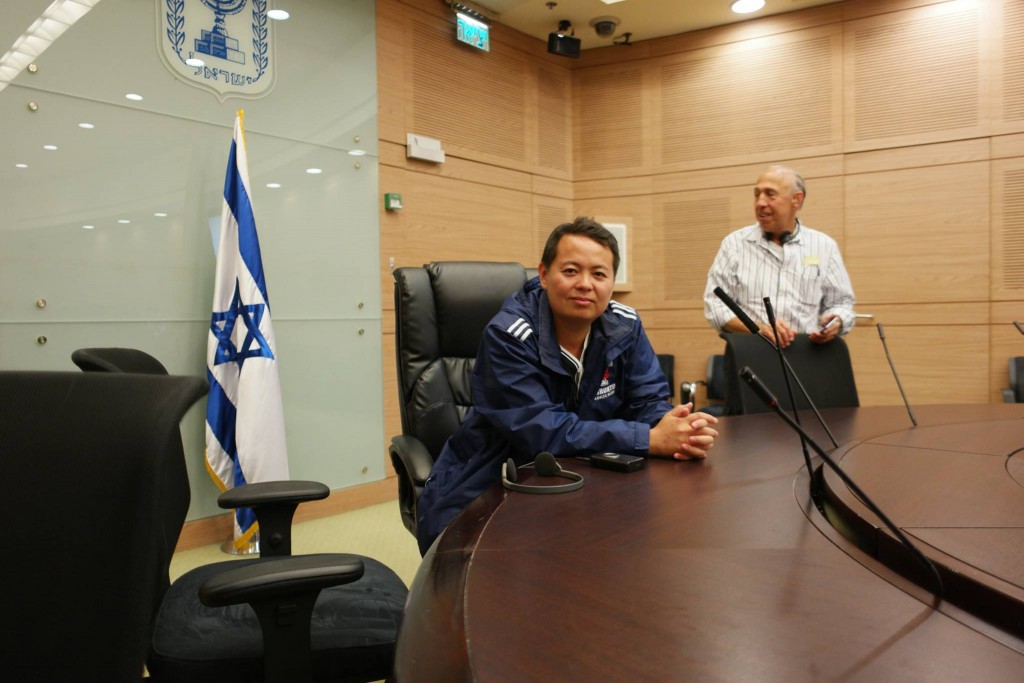
Dear Friends,
I believe travel should always have a purpose, to understand and experience the new culture, to engage with others and expose to new prospective, and build bridges. The purpose of this episode is not trying to offend or demonized that wonderful people of Israel, but to offer a fresh perspective that you will not see in corporate media. One of the goal of this series is promote understanding of others, in this case putting a human face on Palestinians and their everyday suffering since the occupation. My hope this episode will promote dialogue rather create hatred.
Ultimately, only the wonderful people of both Israel and Palestine can resolve their different. I urged you to share this episode with all your friends and family and raise awareness that only short distance away from the wonderful beaches and malls of Tel Aviv, few kilometers away from Israel’s political power Knesset, few kilometers away from comfortable illegal settlements, are the Palestinian who lives in poverty, deprived of their rights to education, clean drinking water, and more important their personal dignity, and more lands confiscated from them everyday. The Israel Ministry of Foreign Affairs has requested I named this episode “Palestinian Territories” which I refused. In accordance to international law, all filming due in any illegal settlement such as the Dead Sea near the deemed by international community will be allocated to Palestine. I believe recognition of Palestine is long over due, and I am not going to deprive on Palestinian this right and their rights to claimed on their natural resources that is currently exploited by Israeli companies, while they lived under poverty.
Even though I condemned all form of violence, I wanted to showcase this toxic environment which the Government of Israel created contributed to the growing hopeless among youth leading to more suicide attack. My goals from this episode is to create greater understanding of Palestinian people, provoke dialogue, not government to government, I believe in the dialogue between Palestinians and Israelis.
Thank you, I hope you enjoy this episode and the best of Palestine has to offer.
Charles Huang, Executive Producer
Our Policy of NOT Promoting Businesses inside illegal Israeli Settlement
We DO NOT believe in BDS, Boycott, Divestment and Sanctions of Israel, that is collective punishment for the good people of Israel, even though that is what’s happen in Gaza. However, we discourage all our audience to visit or support business on illegally occupied Palestinian Territories. These lands and natural resources belong to people of Palestine, given majority of them are suffering from poverty, lack of access to clean drinking water due to Israel’s strict rationing (as experienced first hand), education, and right of movement and more and more lands are confiscated everyday. You are taking desperately needed jobs away from a Palestinians when you staying inside a illegal settlement or buy a tour from Israeli company that goes to Palestine, very little money goes to the locals. Responsible tourism is NOT COMPROMISED
History and Political Status:
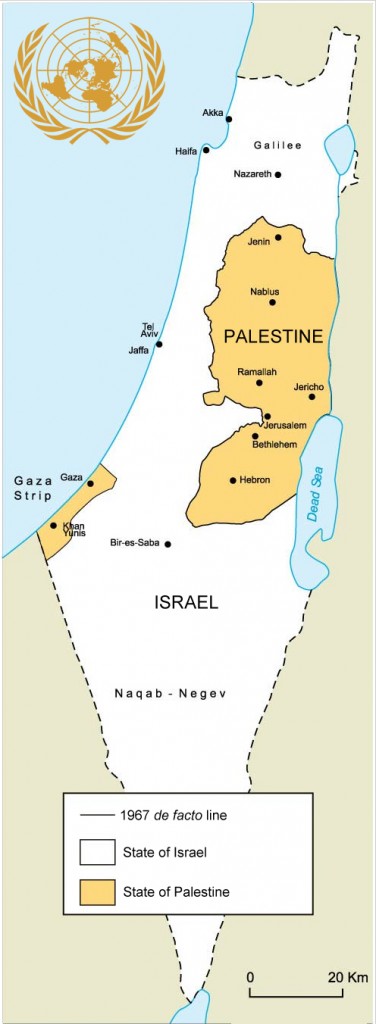
Palestine is a country located in Middle East, in according to 1967 border its territories consist of Gaza, and occupied West Bank and East Jerusalem, it is also a non-member observer states at the United Nations since 2012.
General Information and Holidays:
- Electrical Outlet: 220V/50 Hz, accept H Israeli (Round Pins)
- Drinking Water: limited tap water supplied outside Area A (Controlled by Palestinian Authority), water resources of Palestine are fully controlled by Israel (division of groundwater is subject to provisions in the Oslo II Accord) and often illegally diverted to settlement there rationing water exists in many part of West Bank. Bottled or filtered water strongly recommended if boiling is not a option. Do not drink tap water under in any circumstance while in Gaza.
- Currency Exchange: I recommend you used your bank cards to make withdrawal to get the best exchange rate (typically +2.5% spread) in Palestine, most ATM do not charge fees, but your bank any impose a surcharge. Some foreign banks includes HSBC, Jordan Kuwait Bank, Arab Banks, Cairo Amman Bank and Bank of Jordan
- Holidays: Muslim Friday Worship, most shops in Palestine are closed with exception of some in Ramallah. New Year, Labour Day, Lailat al Miraj (Night of Ascension), Eid al-Fitr (End of Ramadan), Eid al-Adha (Feast of Sacrifice), Islamic New Year, Independence Day, Milad un Nabi (Birth of the Prophet Muhammad), and Christmas Day. – Click the current calendar prior to departure.
Airport Transfer and Public Transportation
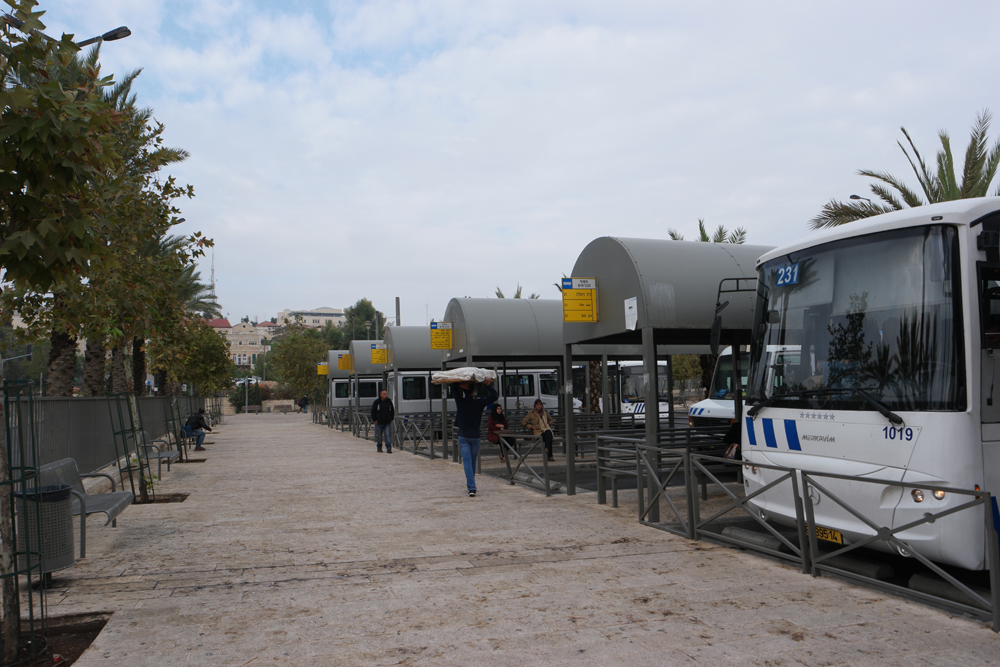
- There are no functioning airport in Palestine, the Yasser Arafat International Airport in Gaza was closed in 2000 after Israel bombed and bulldoze the facilities. The airport was not able to be rebuild due to Israeli blockade of Gaza.
- Foreign nationals can enter Palestine freely via the closest airport in Tel Aviv, the Ben Gurion Airport. Palestinians are not allowed to travel to Israel or the Palestine via Israel. They are required them to use airport in Amman, Jordan and enter via the Allenby Bridge border crossing located nearby Jericho.
- If you are entering via Ben Gurion Airport, the easiest way to get to Palestine is taking Egged Bus No. 5 to the Airport City (El Al Junction) and transfer on to Bus 947 or 423 to Jerusalem Central Bus Station, cost NIS 21.50 and service every half hour. For Palestinian cities or Arab neighbourhood in Jerusalem, you’ll need to take the Jerusalem Light Rail toward Heil Ha-Avir, and get off at the Damascus Gate stop. The East Jerusalem Central Bus Station that serves West Bank is right across from the Damascus Gate.
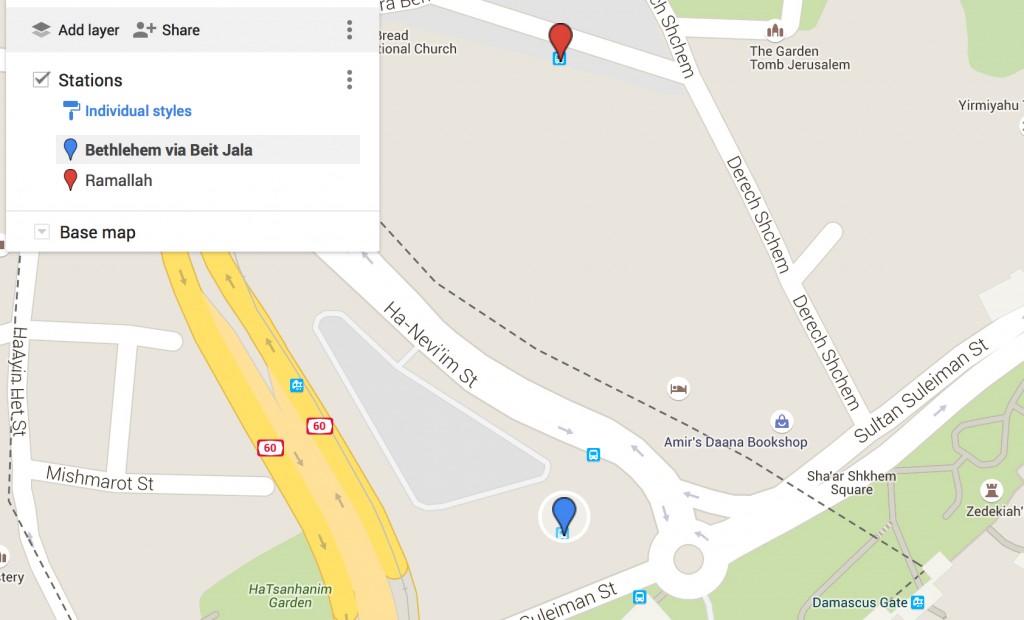
- There is two Arab Bus Station in East Jerusalem and one Arab Bus Stop:
- Right of Damascus Gate with bus stop serving Mount of Olives, Jericho and Abu Dis
- Opposite of Damascus Gate with Red and White marked buses goes towards Ramallah and Nablus
- Left of Damascus Gate with Bus and White marked buses goes toward Bethlehem via Beit Jala and Hebron
Al-Walaja:
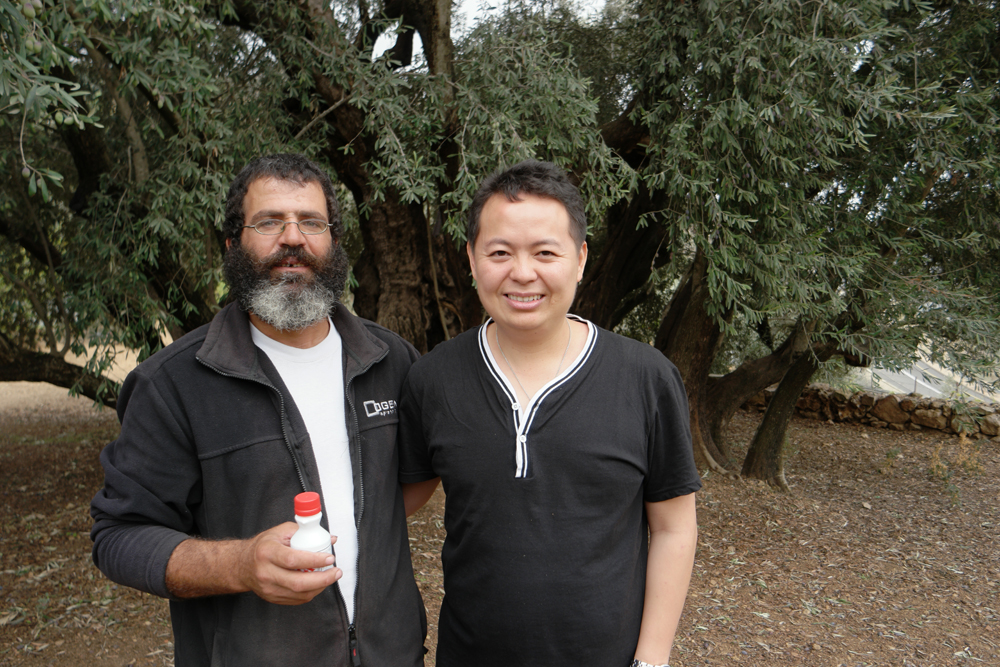
Although most places that I visit can easily visited DIY, but this location has to be kept a secret to protect it from Israeli settlers. Therefore before more of the these trees are being destroyed and land by confiscated by Israel, we want to capture its beauty and tell its story and the significance to the people of al-Walaja. Therefore, if you are interested, please contact my-host Bobu Alami (info@hostelinramallah.com / 970-569001020) of Hostel in Ramallah
One of the reason my co-host Bobo and I chosen this olive growing town as my first stop is to pay my respect to the people of Palestine by visiting the Oldest olive tree in Palestine. Olive tree is one of the most important symbol of Palestine, it’s most powerful symbol of Palestinian attachment to the land, it can be found on paintings, logos, books throughout the centuries.
Secondly, the land is under Area C, which means Israel has full control and these land can be confiscated and the trees destroyed. Since 1967, Israel has occupied 2/3 of original size of al-Walaja and has build two settlement nearby, illegal under international law. In early 2016, the poster came up Two weeks ago, soldiers hung posters in the village of Al-Walaja, south of Jerusalem: “Notice of intent to acquire rights to the land and purchase ownership of the land required for public purposes.” According to Haaretz, the notice does not state where the additional land be confiscated and all residences are require to visit official office in Jerusalem for more detail. However, majority of the residences in this village does not have Israeli permit to enter Jerusalem (read more) and these olives trees are often set on fire by Israeli settlers while solider do not and even block Palestinians from putting out the fire.
I was greeted by Salah Abu Ali, who is considered many by guardian of the tree of olive trees suggested its at least 3,500 years old and could be as old as 4,000. The impressive side of this olive tree is equivalence to 10 olive put together with over 12 meters high with a 25-meter diameter covering over an area of 250 square meters. Prior to the 1948 war, people would organized banquets under the breaches and hand them out to the poor locals.
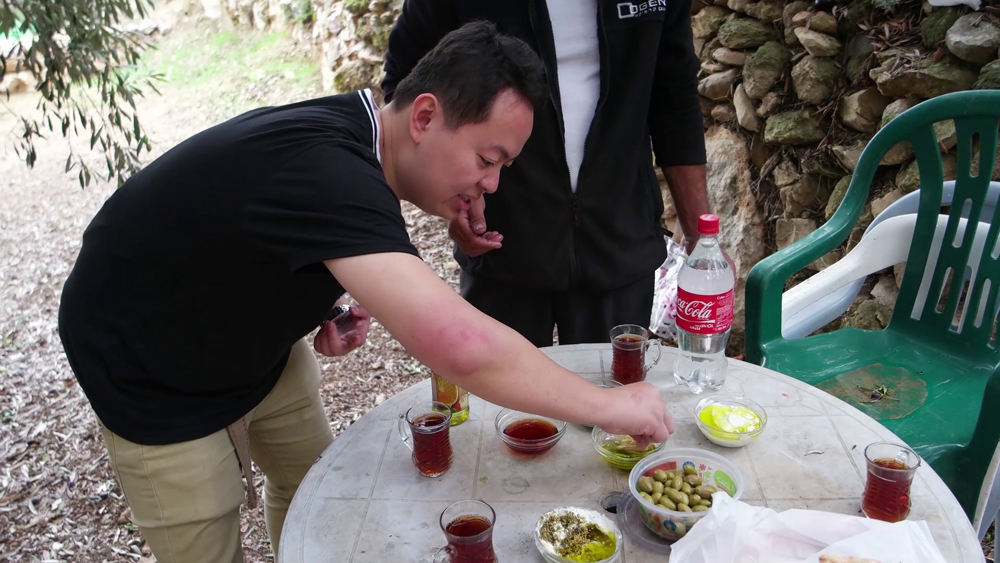
We were treated to a traditional Palestinian breakfast, consist of traditional taboon bread served with a sweet syrups, pickled olives, labneh a thick strained yogurt, za’atar consist of Middle Eastern herbs, Origanum, Calamintha, Thymus and Satureja.
Bethlehem:
Located 10 KM outside the Old City of Jerusalem, the city of Bethlehem is home to approximately 30,000 and has tourist driven economy. Bethlehem is the center of culture and tourism in Palestine, since it is identified by Christian tradition as the birthplace of Jesus.

- Church of the Nativity, one of the oldest holy church in the world, build on top a gretto that believe to be the birth site of Jesus. The original basilica was completed in 339 and destroyed by fire during the 6th century. A new basilica was built 565 by Justinian, and due to its cultural and geographical history, the site holds a prominent religious significance to those of both the Christian and Muslim faiths. The Church of the Nativity is a World Heritage Site, and was the first to be listed under Palestine by the United Nations Educational, Scientific and Cultural Organization (UNESCO). The site is also on UNESCO’s List of World Heritage Sites in Danger. The church is open despite under renovation due to Israeli bombing of this site.
- Free Admissions
- Hours: 6:30 am to 17:30 pm (summer) and 5:30 am to 6:00 pm (winter), Grotto closed on Sunday morning.
- Direction: From Jerusalem Central Bus Station left across from Damascus Gate. Take bus no. 21 and get off at the last stop and walk downhill to Manor Square. From the stoplight, walk up the hill on the left and proceed straight.
- The cost of taxi from the checkpoint to anywhere within Bethlehem should cost no more than NIS20 and NIS30 for suburbs of Beit Sahour or Beit Jala.
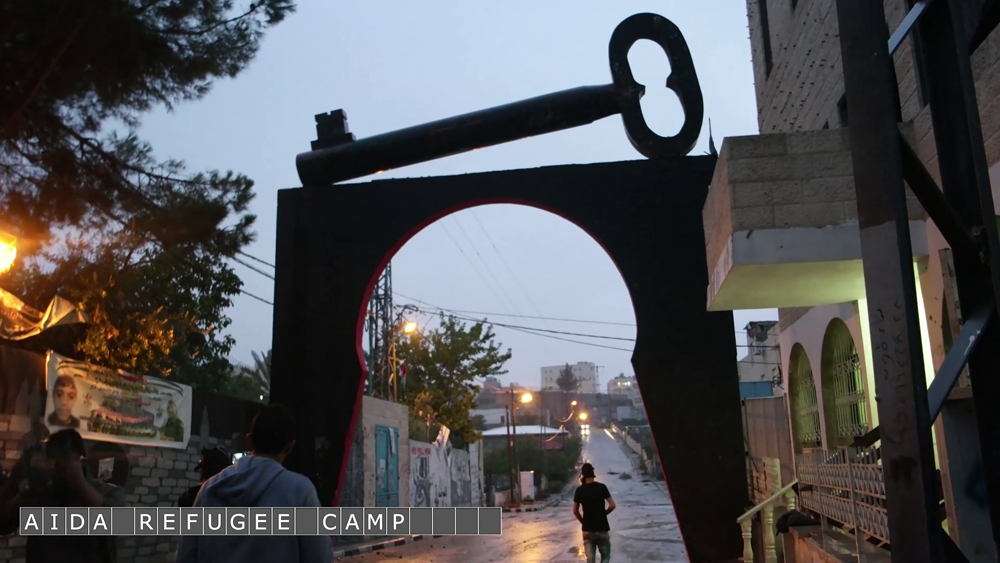
- Aida Refugee Camp, here is a really interesting off the beaten path experience by visiting a refugee camp and experience the harsh living environment of Palestinian refugees. The entrance is mark of the biggest key in the world, The Key of Return. When the Palestinian refugees of 1948 and 1967 left their homes, they took their keys with them in the belief that their return was imminent. During the last sixty years, and these keys have been passed on from generation to generation as a keepsake—as a memory of their lost homes and as lasting symbols of their desired “right of return.”
- From Church of the Nativity, you can walk there, but I do not recommend given most street signs are in Arabic. The two option is shared taxi for around NIS 3 or $0.8 USD or private tax for NIS 20 or $5 USD for the entire car, therefore its strongly recommended if you have four passengers to split the fare.
Hebron:
The Hebron is predominate Muslim city with population of 215,000, split into two sectors: H1 is controlled by the Palestinian Government and H2 controlled by Israel with its illegal settlements. The city has being mention in Bible as the home of Abraham and the resting place for several generations of his family.
- Given the city is under illegal Israeli occupation and restricting the movement of Hebron’s Palestinian residents since 1994. There are tension between the local Palestinian residences and the settlers from the illegal settlements. Therefore, Hebron is site of frequent protest, we recommend you take extremely per-caution and leave any site at the first sign of riot.
- Hebron is easily accessible from most Palestinian cities such as Bethlehem and Ramallah by buses and shared taxi. From East Jerusalem, take the Bus 21 across from Damascus Gate and get off at the last stop and take share taxi to Hebron. All rides should cost less than NIS 20
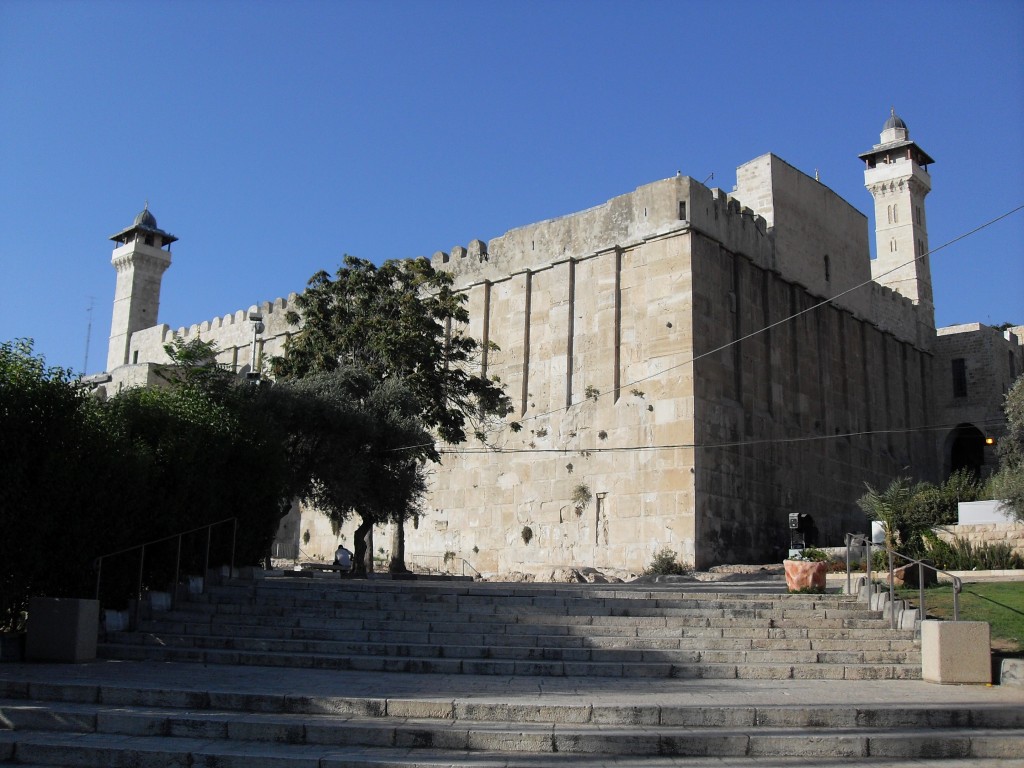
- Cave of the Patriarchs / Ibrahimi Mosque, build in first century as a shrine complex built mainly under Herod and double tombs of Abraham and Sarah, Isaac and Rebecca, Jacob and Leah, considered the Patriarchs and Matriarchs of the Jewish people. Despite being under illegal Israeli control, UNESCO Declares Rachel’s Tomb along with the Cave of Patriarchs Muslim Holy Sites
- Opening Hours: 7:30 – 11:30 am, 1 – 2:30 pm, 3:30 – 5:00 pm, Closed Fridays and Saturday morning for non-Muslims
- Note: due to recent knife attacks, Israeli must restrict access to the site at times.
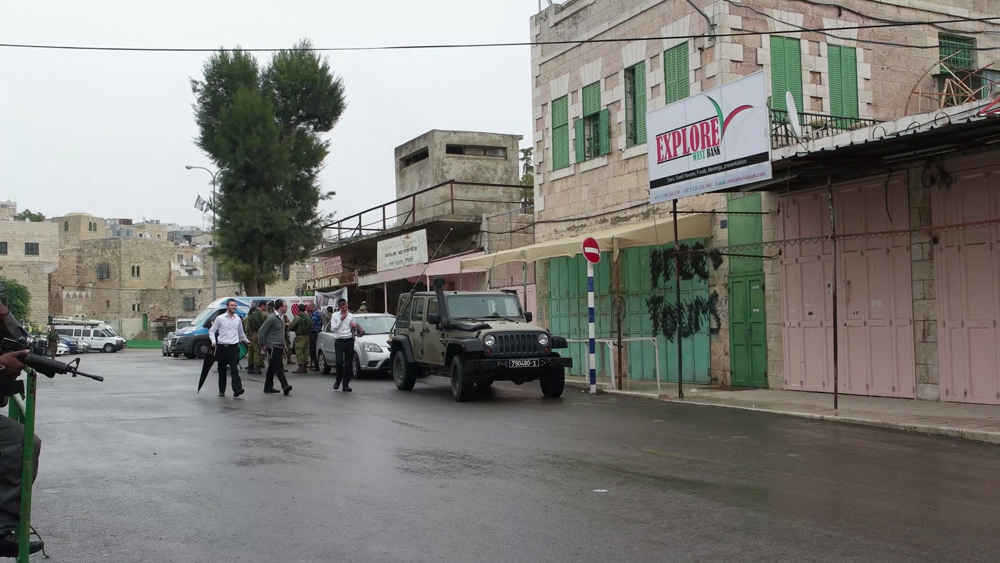
- Al-Shuhada Street, the main road leading to the Tomb of the Patriarchs, used to be the center of Hebron consist of bus station and police station. After riots following the February 1994 Cave of the Patriarchs massacre in which 29 Palestinians was killed by a Israeli extremist, Israel wrongfully collective punished the victims by closed the street for Palestinians.
- If the main entrance to the Al-Shuhada Street is closed, then enter thru the entrance for Tomb of the Patriarchs or Ibrahimi Mosque.
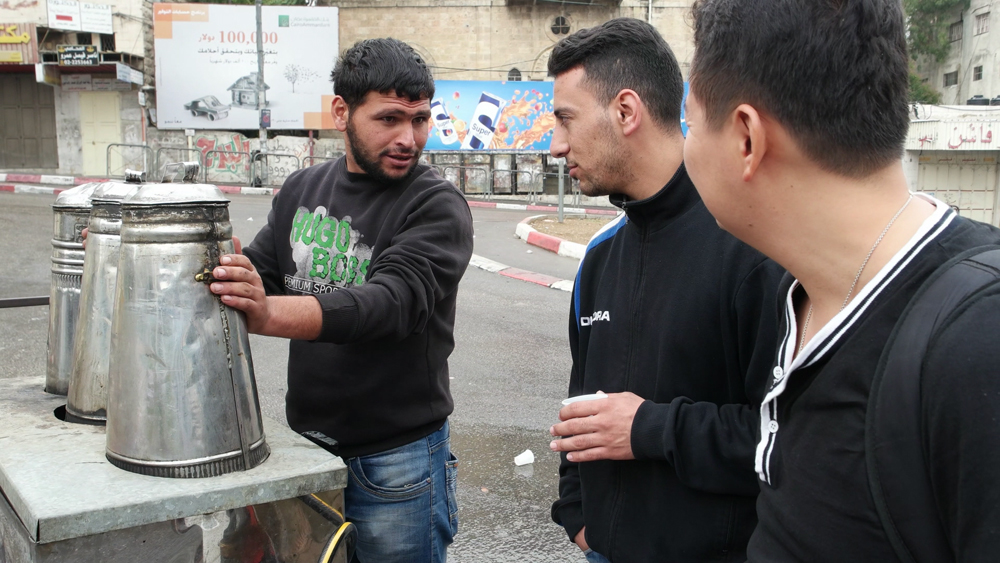
- On Friday, one of the very few places that is open is the street coffee and street food. One cup of coffee cost less than NIS0.50 or $0.12 USD. There are also inexpensive sweet corns and fresh juices for few dollars.
Jenin:
Jenin is the most northern city of Palestine and home to 40,000 with another 10,000 in the Refugee Camp. The city is recongized as biblical city of Ein-Ganim by Ishtori Haparchi and the name means springs of gardens.
- Getting Here: There is frequent bus service and shared taxi to Jenin via Central Terminal in Ramallah and Nablus.
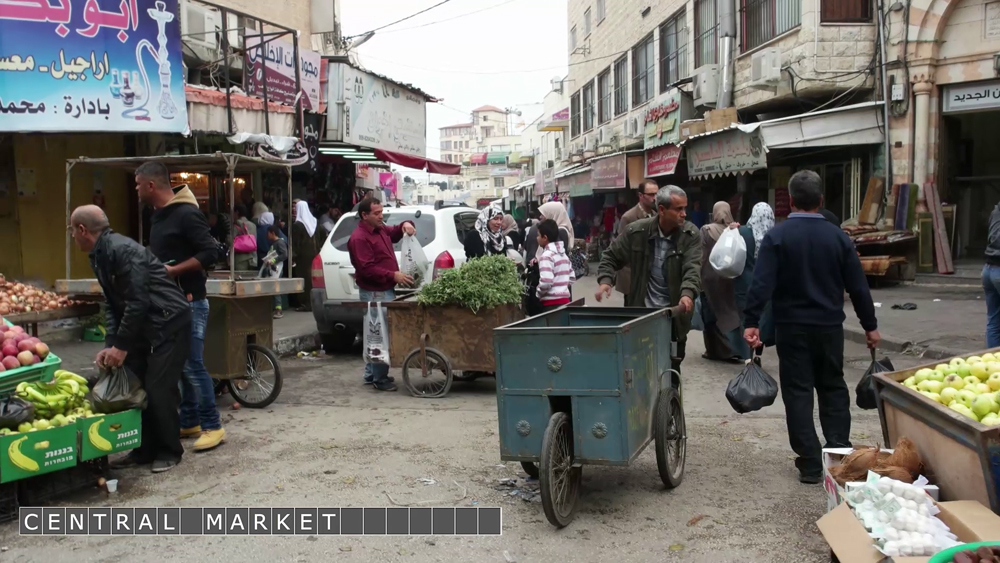
- The Old Jenin and Market (Souq), the market is also called Al Sibat, the oldest commercial center of Jenin that dates to the Ottoman Era. This is where you can sample all the locally grown fruits and vegetables. The Old City is just feet away. It consists mainly of tightly packed small historic buildings that serve as living spaces, small offices, and workshops. It is worth wandering around this surprisingly calm quarter, with its sharp contrast to the hectic bus station and market areas unspoiled by mass tourism.
- Most shops are closed on Friday Muslim Holiday
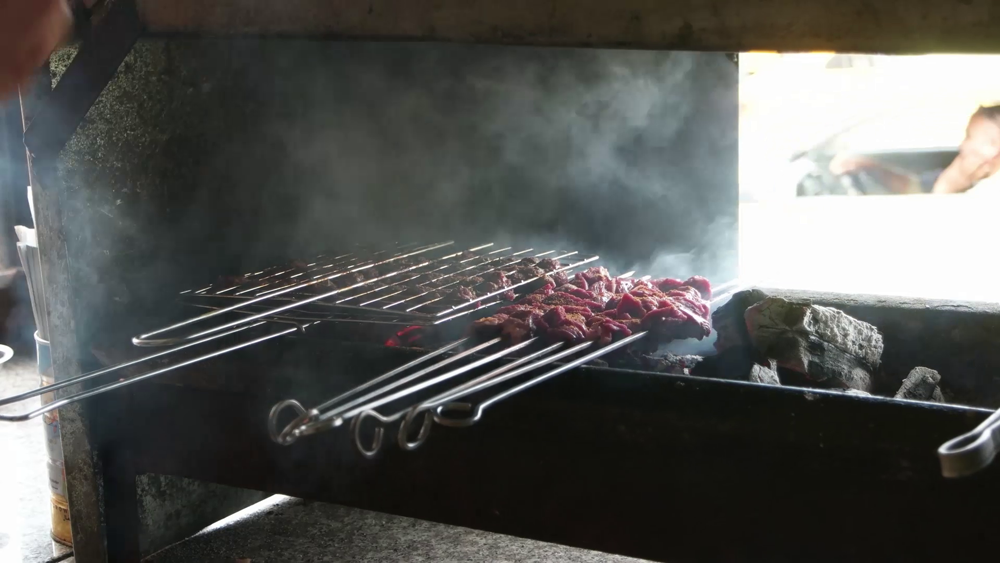
- Freshly Grilled Kabab, this is a nice place where you try out some unique kababs. In the central square across from the bus station, you can buy any types of meat (beef or goat), and bring it next door to be prepared into fresh kabab. The cook will have all the spices and you just need to tell him whether you like it spicy, it will be served to you on along with plate of bread. The cost for grill is about NIS20, along with the free bread.
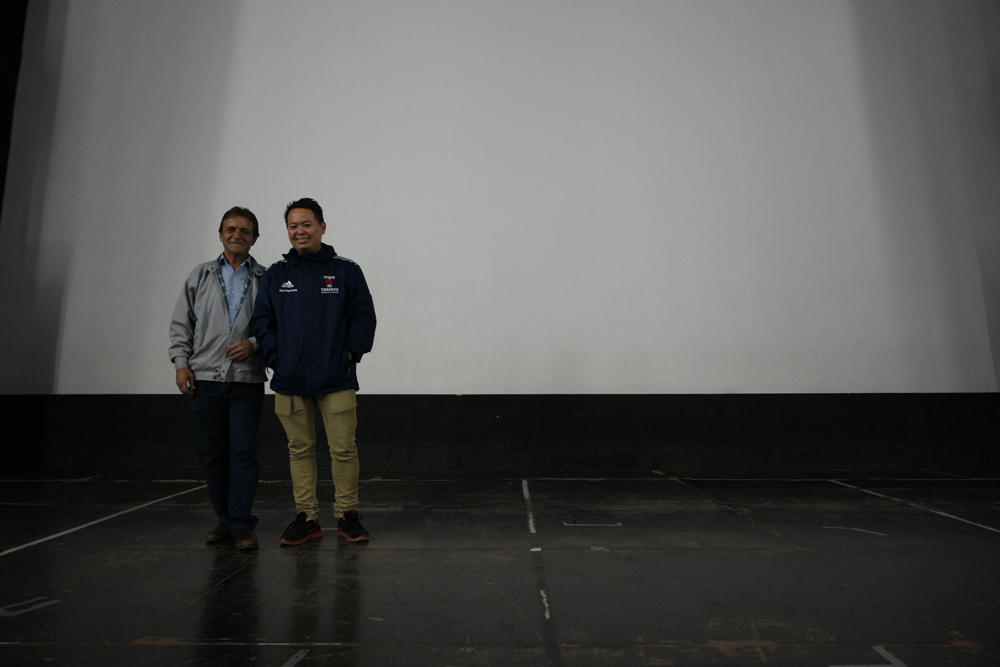
- Cinema Jenin Project & Guesthouse, an international charitable effort largely paid by the German government. It is intended to encourage a culture of cinema going for the inhabitants of Jenin. Today, the theatre is used for local performances, such as theatre plays, short films, music concerts, a small step by reactivating the local culture. There is also a local guesthouse (see review video) in the cinema that offer budget travellers affordable dorm beds and private rooms at a good price.
- Azzaytoon Street No. 1 (bus station city center)
Burin:
Located only five kilometre west of Jenin is the small village of Burqin with a population of 6,000, majority of town consist of Muslim along with 20 Christian families.
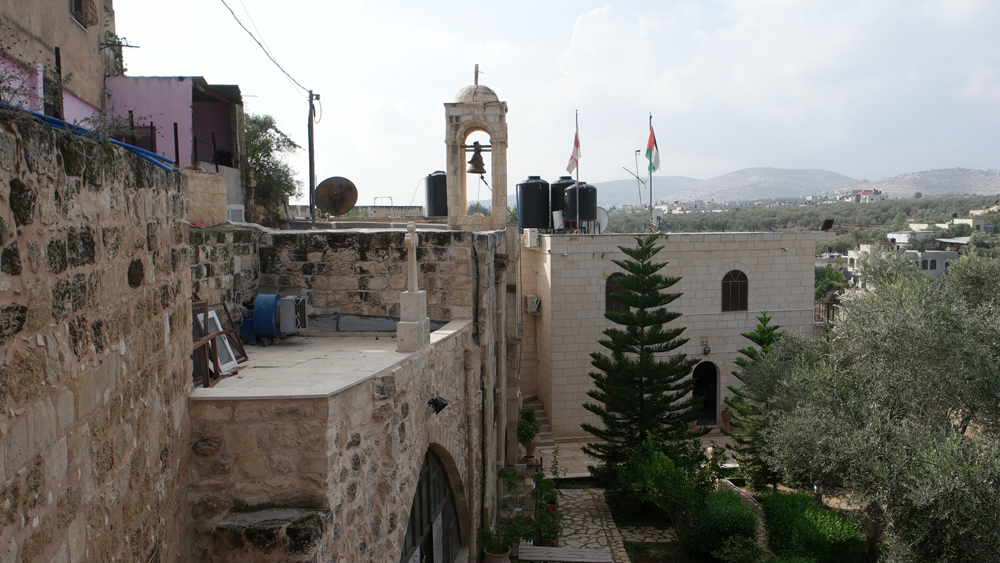
- St. George Church or Burqin Church, over 1800 years old and build in the Byzantine era. It’s the third oldest church in the world and believe to be site which Jesus cleansed ten lepers of their disease. The church became popular with many Christian pilgrims for this miracle, in the New Testament Jesus had passed through the town on his way to Jerusalem from Nazareth and heard the help from the ten lepers who are isolated inside a cave under quarantine to prevent the spread of their disease. What so remarkable is that the cave under the ground is still open to the public.
- Getting here is easily accessible by a Taxi from Jenin for approximately NIS 15
Sebastia:
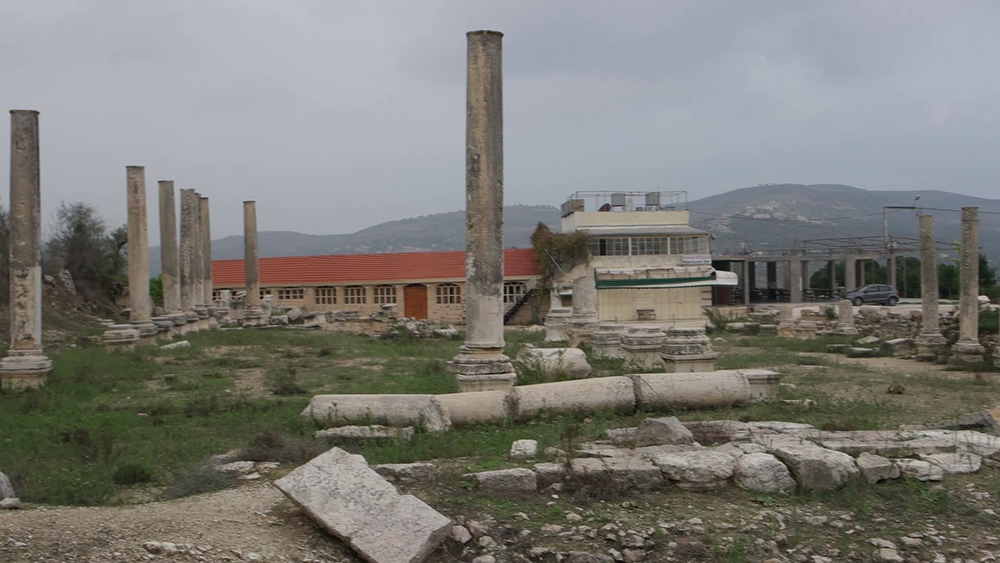
Sebastia is a Palestinian village with a population of 4,500 and approximately 15 kilometre from Nablus. The village along with all of Palestine was incorporated into Ottoman Empire in 1517 and villagers paid taxes in form of wheat, barley, olives, goats and beehives.
- Getting Here: Take a direct shuttle from Nablus’ near the Mosaic Factory
- Israeli Ministry of Tourism Propaganda Leaflets, you may encounter leaflets handed out for free at the site actively discourage people to leave, pointing out that as ‘area A’ the village, unlike the ‘area C’ remains, is off-limits to Israeli citizens under Israeli law. This is totally unacceptable and wrong, please take as many leaflets as you can and recycle the papers.
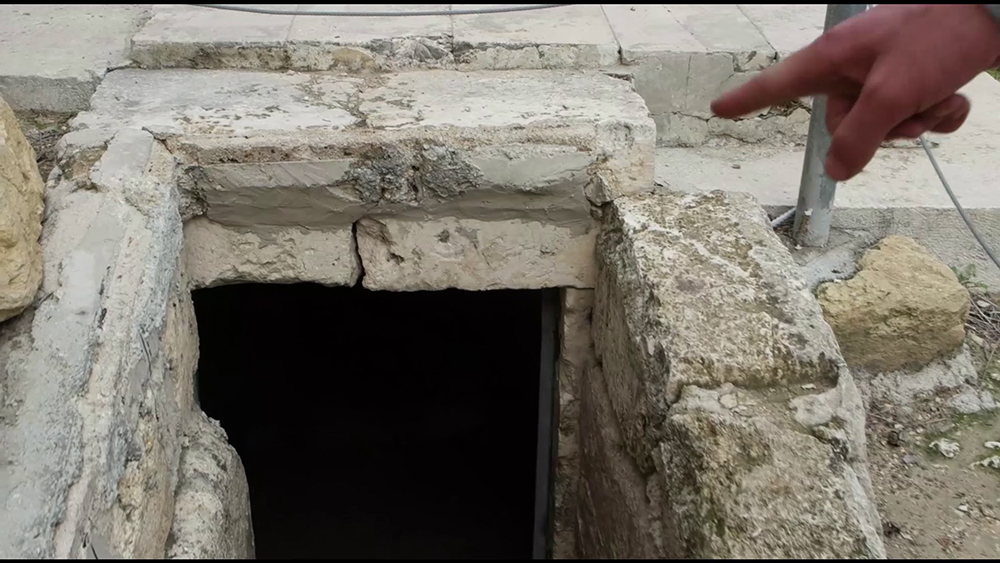
- Sebastia Archaeological Park, the impressive ruins consist of Samaria-Sebaste located just above the eastern slope of the hill of modern village. Estimated to be 10,000 years and contain the tombs of Biblical figures Elisha and Obadiah and prison of John the Baptist.
- Free Admissions
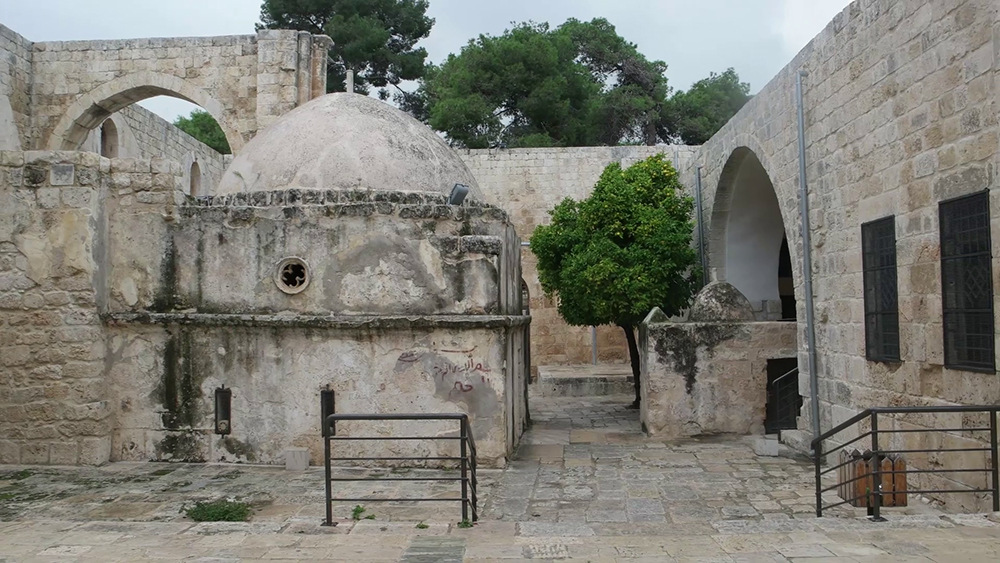
- The village of Sebastia contain the site of Tomb of the John the Baptist. The early Christian tradition states from the first half of the 4th century, says John the Baptist was buried his body here after he was beheaded by Herod Antipas. If you walk around the town, you’ll some magnificent ancient architectures, including abandon old houses dating back hundreds of years old and the Mosaic Sebastia Guesthouse right in centre of the village.
Nablus:
Nablus is one of the oldest cities in the world, possibly first established 9000 years ago. Located in the Palestine’s Central Highlands, it is home to a population of 125,000. Much of the local Palestinian Muslim population is believed to be descended from Samaritans who converted to Islam.
- Getting in: There is frequent bus or shared taxi service from all Palestinian cities, including Ramallah, Jenin, Bethlehem and Jericho.
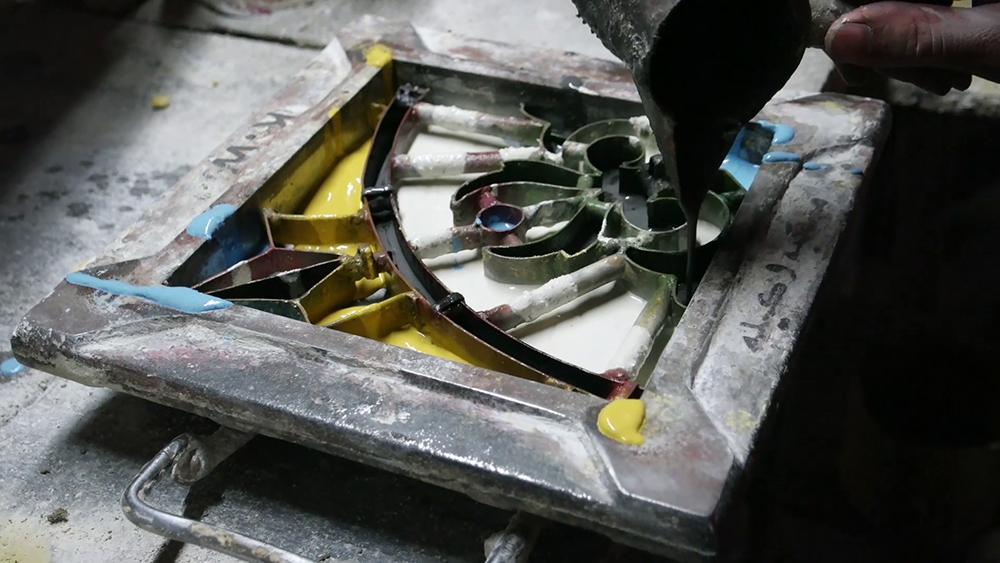
- Aslan Tiles and Mosaic Factory, the last remaining producer of traditional handmade Palestinian tiles. This family business around since the 1930s, four generations of the Aslan family have honed the craft. Despite, recently being offered a very lucrative offers to move the operation to Israel, they resisted and prefer to maintain their roots.
- Downtown Nablus
- Free walk in
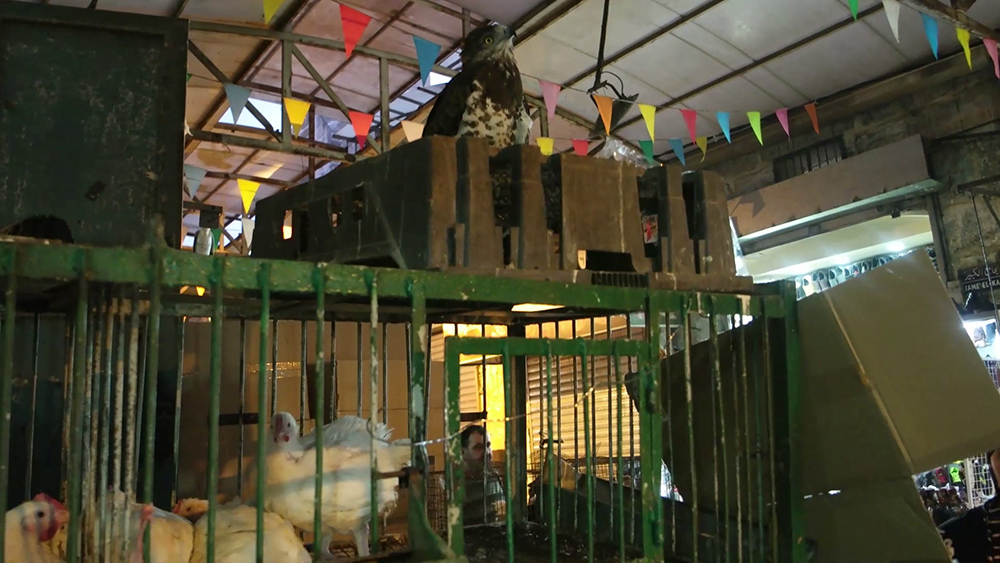
- Old City Market or Souqs, is a large residential and market area featuring many old buildings and lively street scenes and activities. There are impressive mosques, market or souqs, Turkish baths and traditional soap factories.
- Most shops are closed on Friday Muslim Holiday
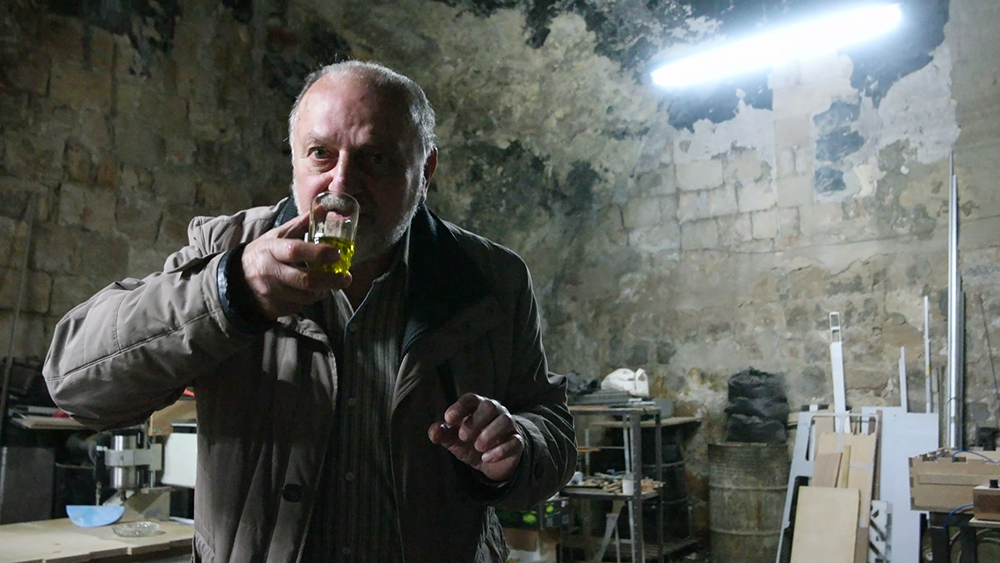
- Nablus Soap Factory, Nablus is famous for its castile soap that are only produce here, its main ingredients are virgin olive oil, water, and an alkaline sodium compound. The finished product is ivory-colored and has almost no scent. Traditionally made by women for household use, it had become a significant industry for Nablus by the 14th century. In 1907 the city’s 30 Nabulsi soap factories were supplying half the soap in Palestine. The industry declined during the mid-20th century following destruction caused by the 1927 earthquake and Israeli military occupation. Today, there are only two soap factories survive in Nablus.
- Free Walk In
- Closed on Friday Muslim Holiday
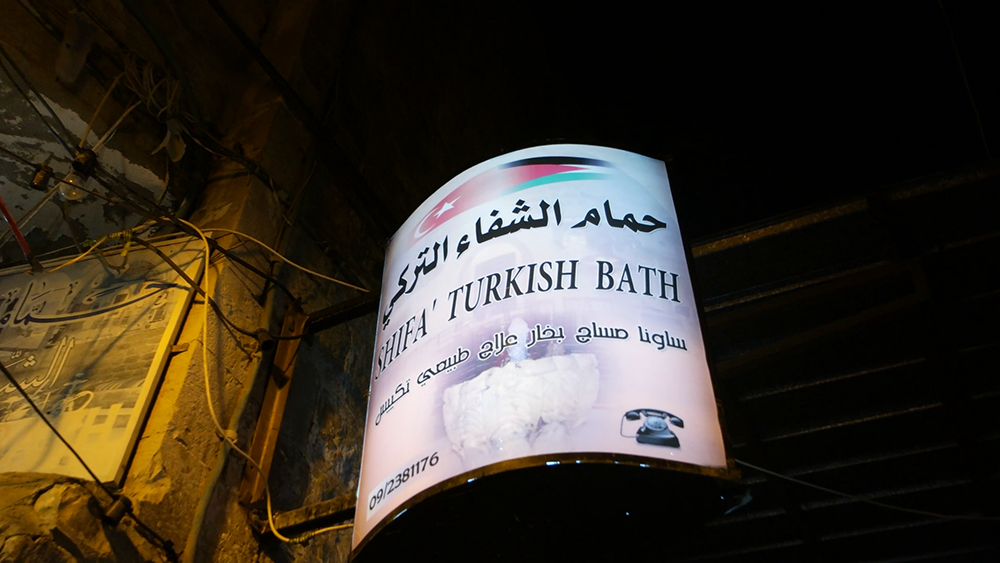
- Hamam Al-Shefaa Turkish Bath, this is an ancient Turkish Bath House, dating back the thirteenth century. Build in 1624 by the local and powerful Tuqan family.
- al-Yasmina quarter of the Old City al-Nasir Street
- Open daily for Men: 6:00 am to 11:00 pm daily except Tuesdays when it open for Women from 8:00 am to 5:00 pm
- 45NIS for Bath
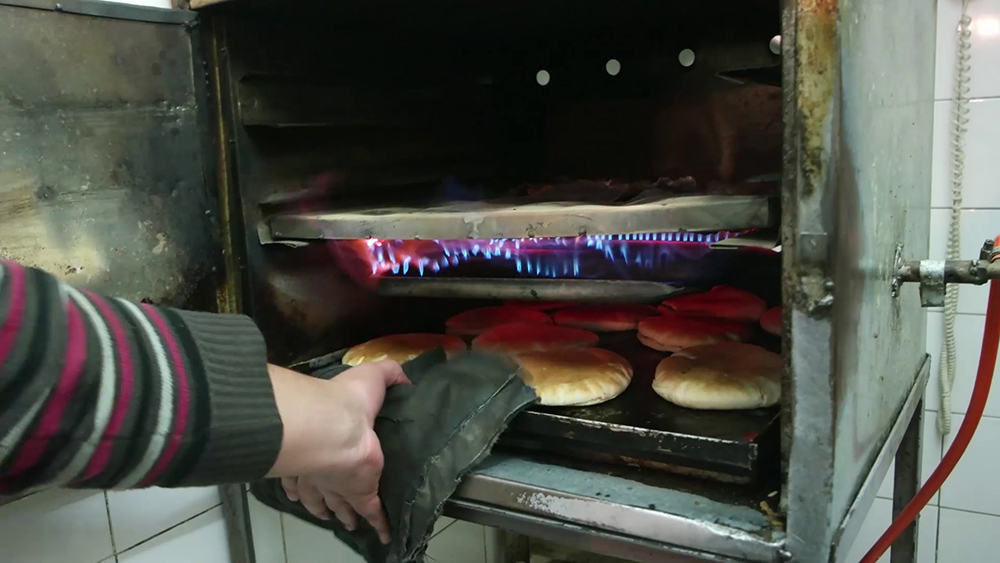
- Street Food: Ara’yes, means bribe and this is one of the local’s favourite street food consist of a grilled pita bread sandwiches stuffed with minced meat, typically lamb. It only cost NIS 2.00 or $0.50 USD
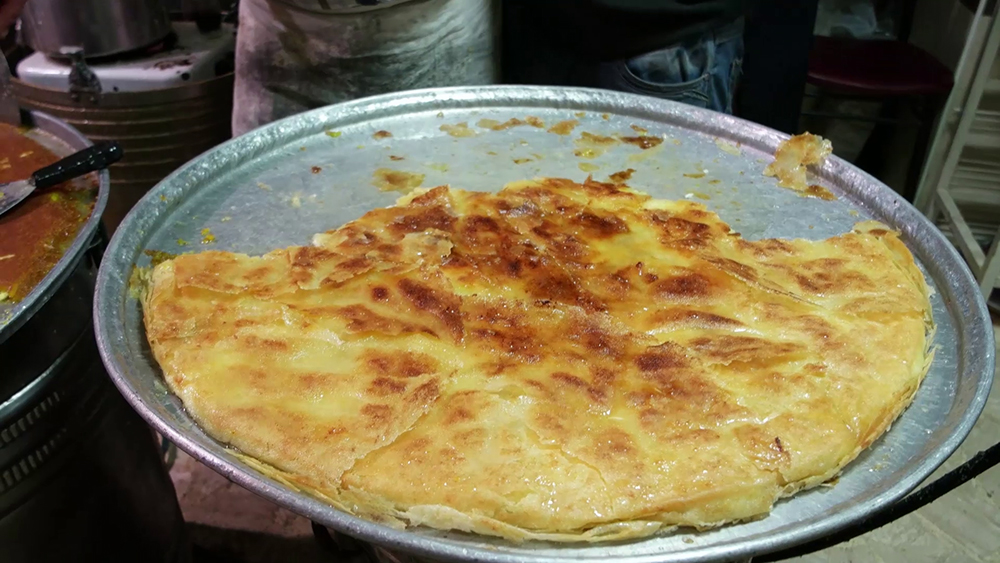
- There is numerous shops selling popular Palestinian and Arabic sweets on route between the Old City and Al-Hussein Square and here is some of them:
- Zalabia Kari, deep fried pumpkin candy
- Halva, is a Arabic sweet, tahini based confections consist of flour-based made from grain flour, typically semolina. Nut-butter-based are usually made from tahini sesame paste or butters made from sunflower seed butter.
- Kanafeh, this is the famous sweet that originated in Nablus and its still renowned for the original kanafeh, which consists of mild white cheese and shredded wheat surface, and top with sugar syrup
- Kolaj, deep fried pastry stuffed with cheese
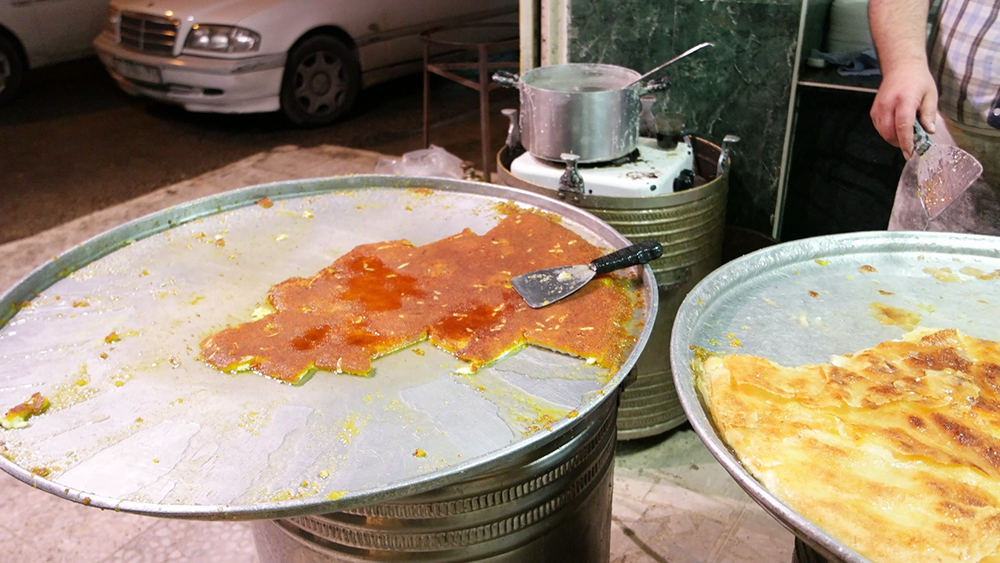
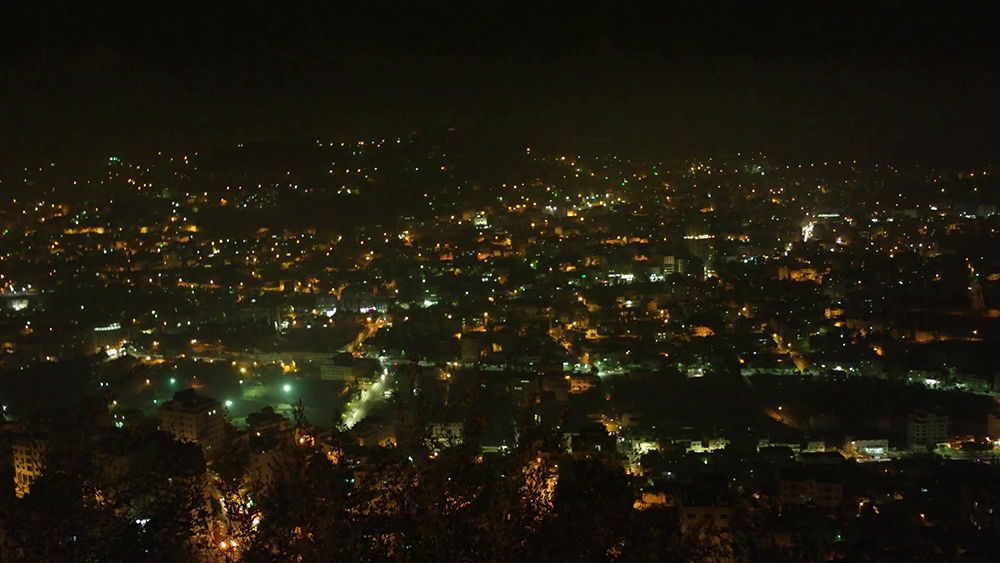
- Sama Nablus Gardens, located high in the upper part of Mount Ebal. Sama Nablus has charming garden fountains, family meeting spaces, also a number of ancient caves in the area. This is also where you’ll able to find the best view of Nablus. It takes a hour hike up from the Old City or taxi is pretty inexpensive.
St. George Monastery and Wadi Felt:
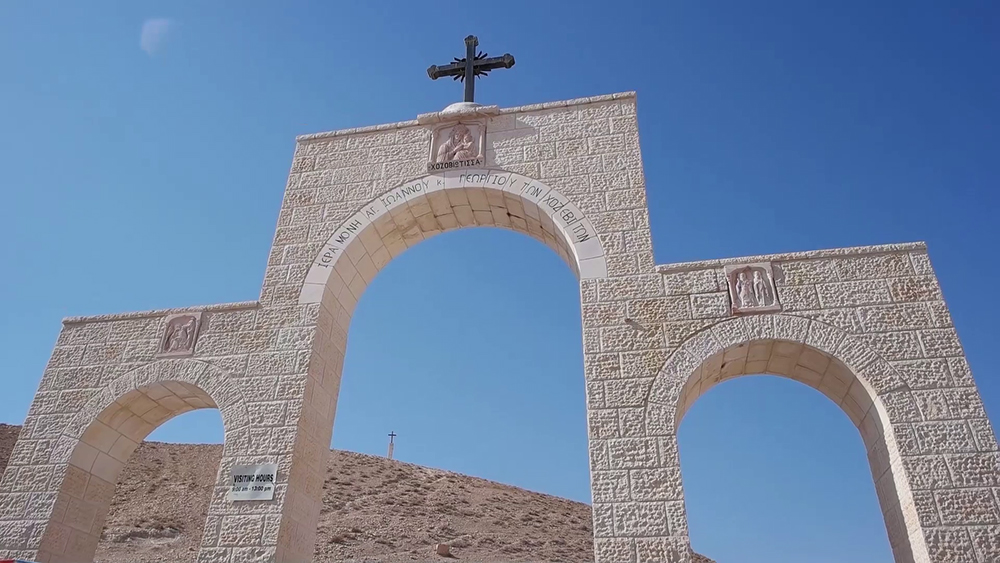
- Getting here: Take any bus or shared taxi from Palestinian cities for Jericho and asked the driver to stop at the entrance of St. George Monastery. There is a free look out spot just before the Ain Fawwar to get the breathtaking view of the Jordan Valley as seen in the episode. However, we don’t recommend going further than the lookout point since the admission fee is pay to the National Parks and Nature Reserves, not going to the Palestinian people.
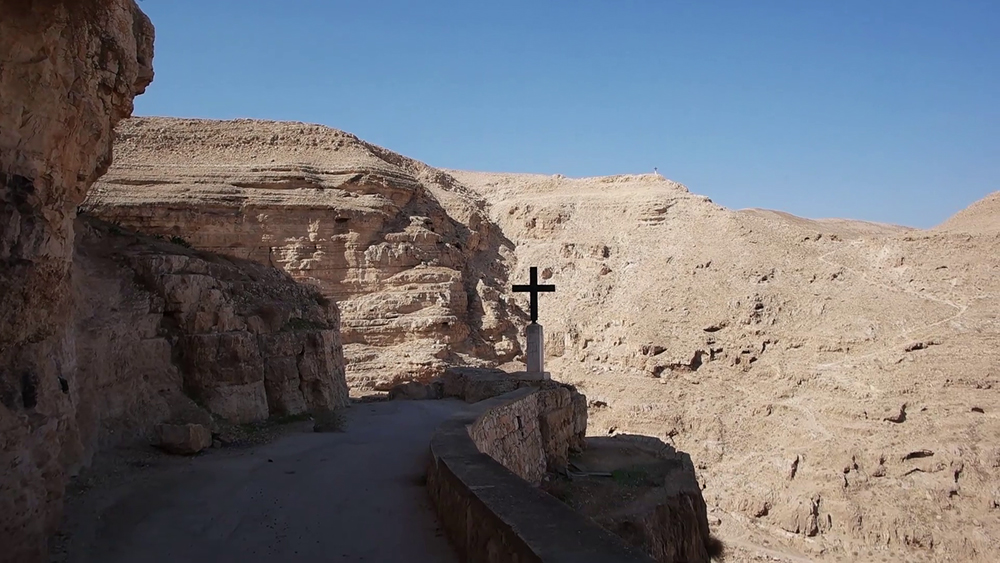
- Wadi Qelt is a long stretch of valley originates near Jerusalem and ends in Jericho. This is where Jesus believe to have walk and passed by Jericho twice when he cured the two blind men (Mark 10:46-52, Matt 20:29-34) and when he converted Zacchaeus, the tax collector (Luke 19:1-10). The hike is about two hours from the St. George Monastery to Jericho and you’ll encounter some breath taking scenes. At the end of the trail, you’ll arrived in Jericho and only few meters away is Herod’s Palace.
- Make sure to bring water and sunscreen as you most likely encounter extreme heat and sun
- Make sure to wear a pair of hiking boots, no sandals as some part of the consist of limestone and subject to slip and fall.
- Make sure to check for weather, especially for rain in winter months. If it is raining or has rained in the 48 hours prior to the hike, the overflow stream of rain water and slippery paths may prevent you from hiking the path.
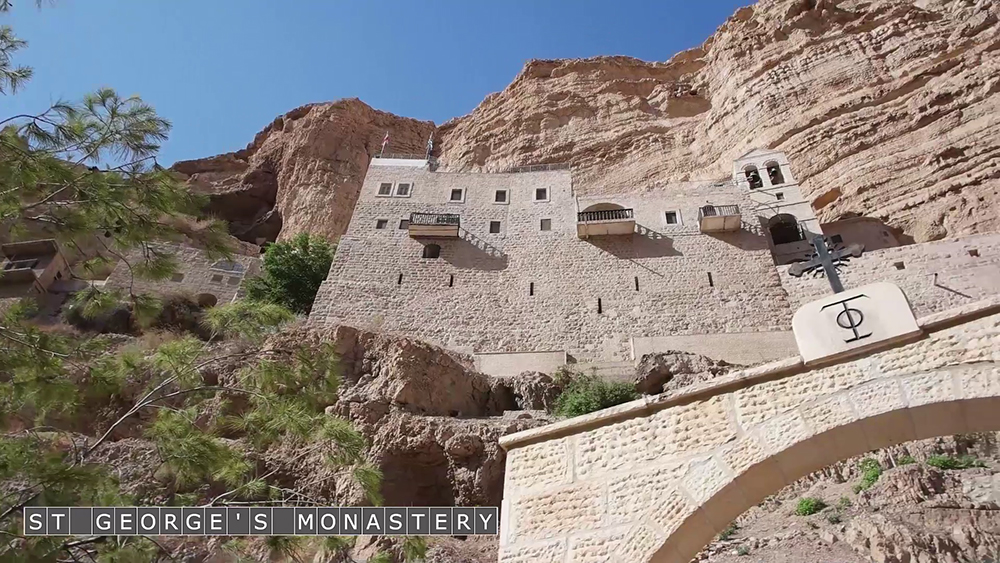
- St. George Orthodox Monastery, one of the rare structures in Palestine is the sixth-century cliff-hanging complex, consist of a ancient chapel and gardens, is actively inhabited by Eastern Orthodox monks. St. George Orthodox Monastery began in the fourth century 480 AD with a few monks who sought the desert experiences of the prophets, and settled around a cave where they believed Elijah was fed by ravens. Destroyed in 614 A.D. by the Persians, the monastery was more or less abandoned after the Persians swept through the valley. The Crusaders made some attempts at restoration in 1179. However, it fell into disuse after their expulsion. In 1878, a Greek monk settled here and restored the monastery, finishing it in 1901. The traditions attached to the monastery include a visit by Elijah en route to the Sinai Peninsula whose wife Anne was infertile, weeping here when an angel announced to him the news of Mary’s conception.
- Free
- Open 9:00 am – 1:00 pm everyday, closed Sunday
Jericho:
Jericho is one of the oldest cities in the world as archaeologists have unearthed the remains of more than 20 successive settlements in Jericho, the first of which dates back 11,000 years or 9000 BCE. It’s archaeological significance includes having the with the oldest known protective wall and the oldest stone tower in the world as well. Today it is home to 20,000 and world’s longest cable car under the sea level.
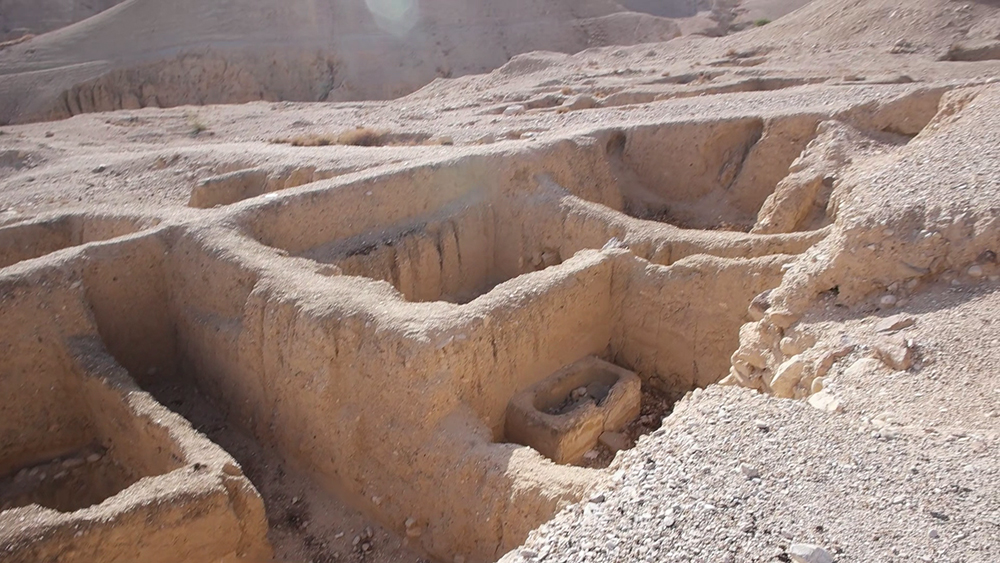
- Herod’s Palace, this is a winter palace built by Herold the Great in Jericho. Jericho being 1,000 feet under the sea level, the temperature remains warm during winter. His engineers manage to diverted water from nearby spring in Wadi Qelt for the gardens, baths and a large swimming pool. The site is surrounded by large palm trees for shade and a reception hall measuring 60 by 100 feet with a mosaic floor.
- Free
- Located near the end of Wadi Qelt trail, reachable by taxi from Jericho or walk (directions)
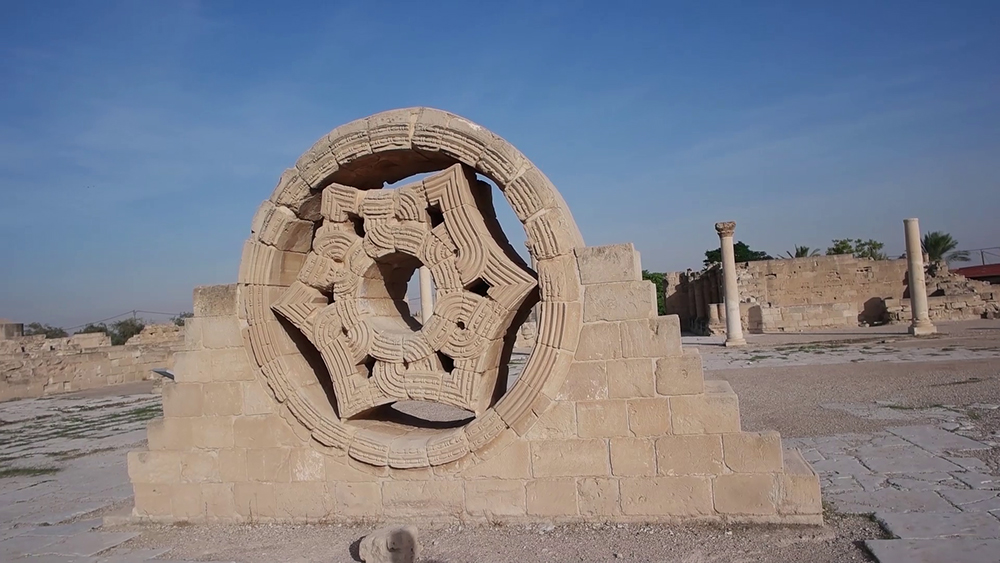
- Hisham’s Palace, located 5 km from Jericho in a small town of Khirbat al-Mafjar. The site has a palace, an ornate bath, and an agricultural estate totalling over 60 hectares. It is believe the “Tree of Life” originated here and first appear in the mosaic in the audience room of the bath house.
- From Jericho city centre, you either take taxi or from Jericho’s main square, walk straight up Hisham’s Palace Rd for just over 2.5km (directions)
- Ticket: NIS 10 for adult & NIS 5 for children
- Hours: daily from 8:00 am to 5:00 pm
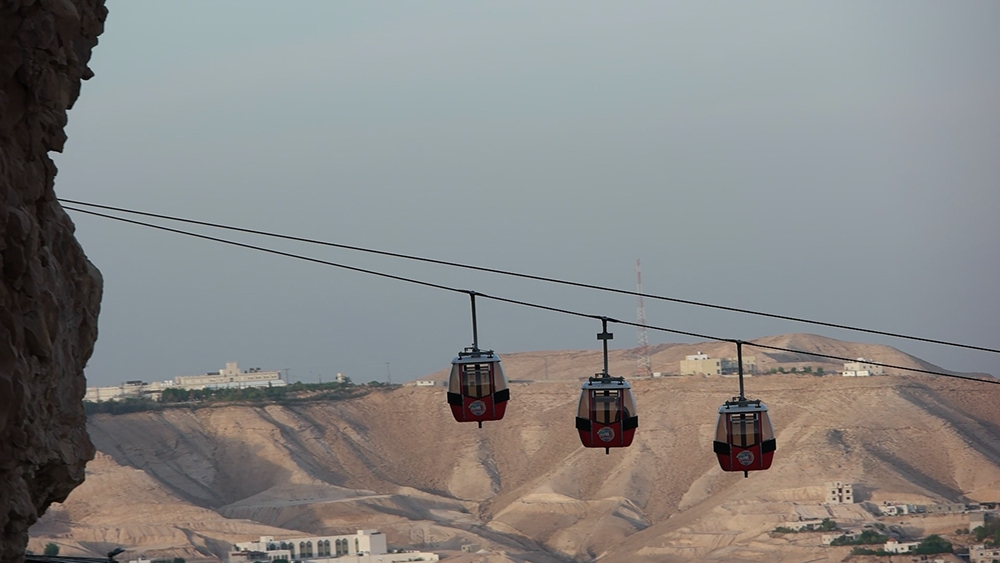
- Jericho Cable Car, built in 1998 by Swiss, the cable car became a symbol of Palestinian resilience against occupation as it entered the Guinness Book of World Records as the world’s longest aerial cable car below Sea Level. The five minutes ride between Tel al-Sultan and the Mount of Temptation will give you a breathtaking view of Jericho above the crop fields.
- NIS 60 for roundtrip
- Opening Hours: 8:00 am to 8:00 pm daily
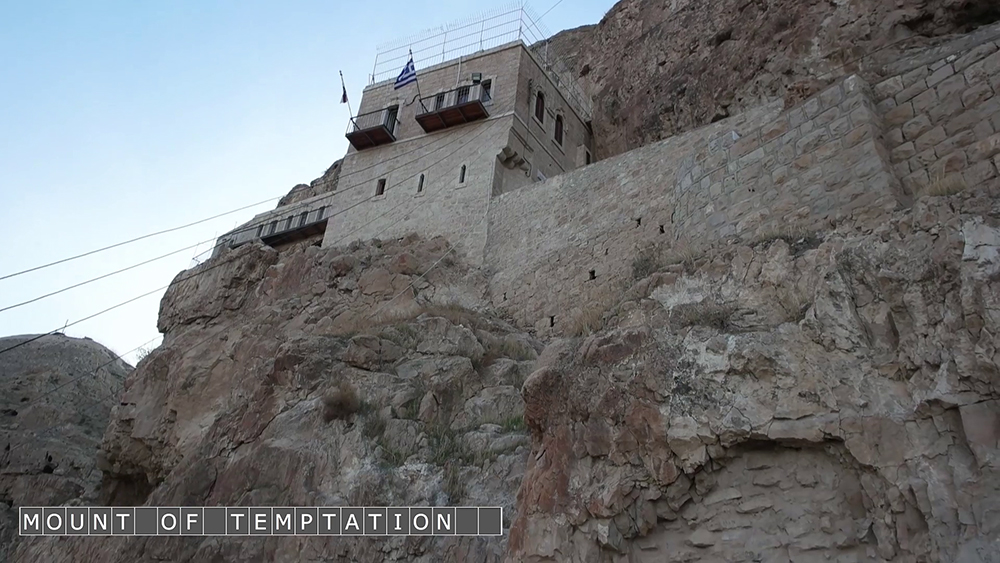
- Monastery of Temptation, the Mount of Temptation is said to be the hill in where Jesus was tempted by the devil. Halfway up to the top of the mount is the Greek Orthodox Monastery of the Temptation. The earliest monastery was constructed by the Byzantines in the 6th century CE above the cave traditionally said to be that where Jesus spent forty days and forty nights fasting and meditating during the temptation of Satan. In 1895, the monastery was constructed around a crude cave chapel that marks the stone where Jesus sat during his fast.
- Getting up: you can hike up or take the cable car for breathtaking aerial experience (NIS 60).
- Monastery Hours: Monday to Friday 8:00 am to 1:00 pm & 2:00 pm to 4:00 pm, Weekend 8:00 am to 1:30 pm (variable)
The Dead Sea:
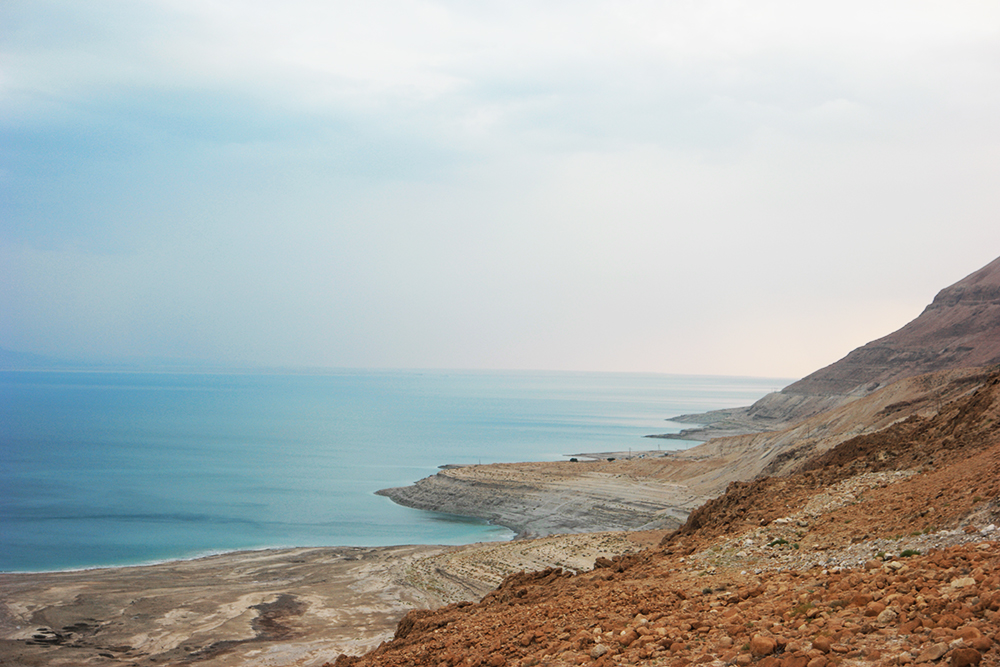
- The Dead Sea, One of the magnificent must see places near Jericho. Only ten kilometer away is the lookout point near the Israeli settlement of Mitzpe Shalem. There is the private Mineral Beach inside the settlement, and we encourage all our audience to respect responsible tourism by not enter any paid establishment in occupied Palestinian Territories that are considered illegal in accordance to the international law. We maintaining a position is the money should goes to the Palestinian people along with these lands and natural resources when a large percentage suffers from high unemployment, poverty and lack of access to education and clean water. Once again supporting these establishment will not help Palestinian in any way.
- Accessible by taxi
Bi’lin:
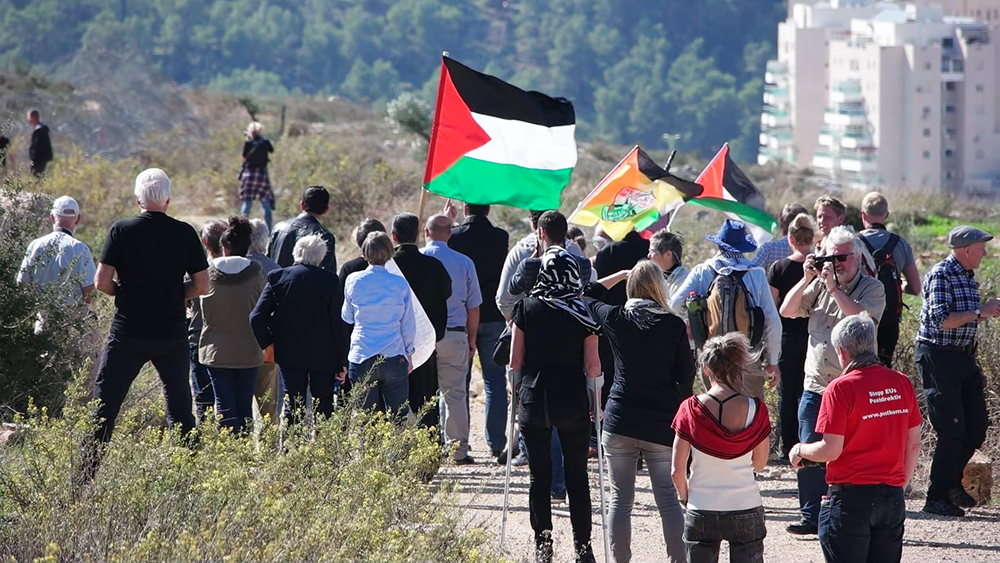
- Free Political Protest is available in both Hostel in Ramallah and Area D, it is pay as you can for the transportation. However, we must warn our audience that there is always risk of peaceful protest turn violence. But it’s extremely inspiring to see people young and old coming out to fight for Palestine.
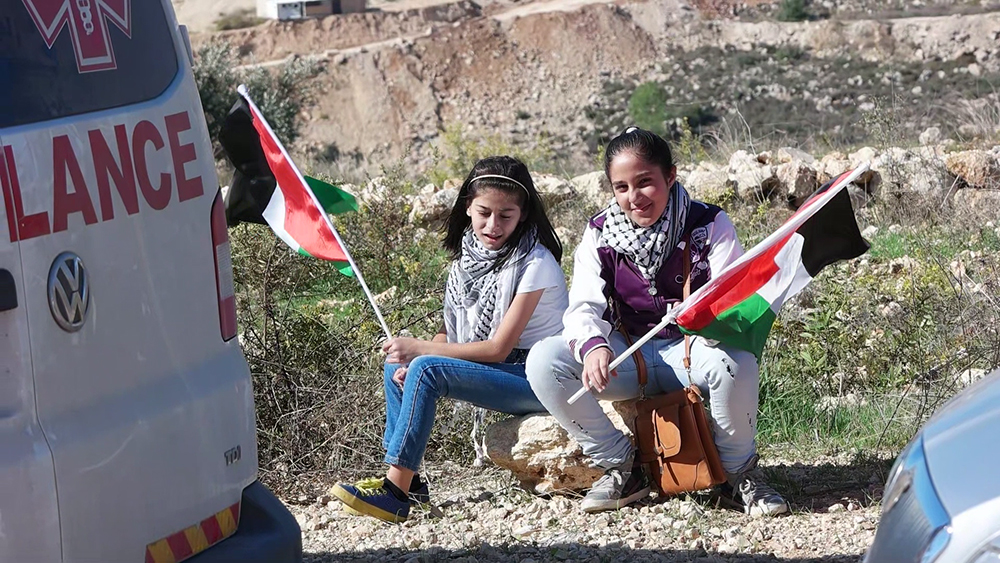
Ramallah:
Israel and Palestine had both proclaimed Jerusalem as its capital and given the special status, I created separate episode featuring the best of what it has to offer. So, make sure to check out that episode too. However, at the present time Ramallah is the de facto administrative capital city of the Palestinian Authority. It’s about 15 km from Jerusalem, this is where I stayed for the entire filming of the Palestine episode. Known for its religiously relaxed atmosphere —alcohol flows freely and movie theatre are well attended —and there are cafes along its main streets. It’s without question, the cultural capital of the Palestine, with a highly educated and fashionable population.
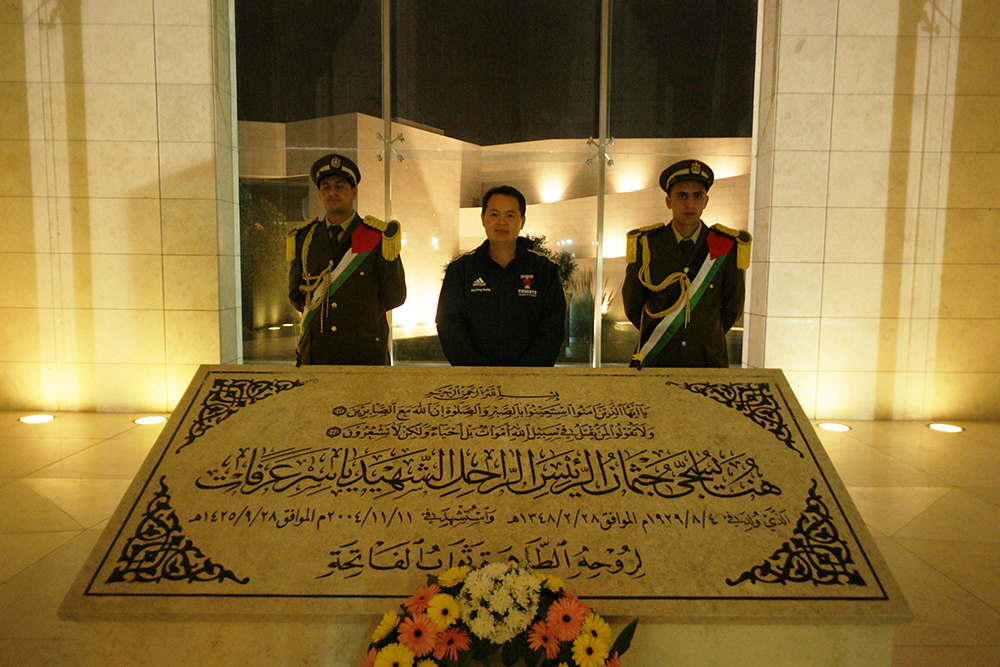
- Arafat Tomb or Arafat Mausoleum, located in Mukataa, the Arabic word for headquarters or administrative center. It was open in 2007 with tomb clad in Jerusalem stone, and designed by Palestinian architects. This is the temporary burial-place of Arafat as Jerusalem was his first choice, the message on the tomb indicated that the final resting place of Arafat shall be in Jerusalem, if it comes under Palestinian control.
- Open daily 9:00 am to 9:00 pm
- Located in Mukataa
- Free
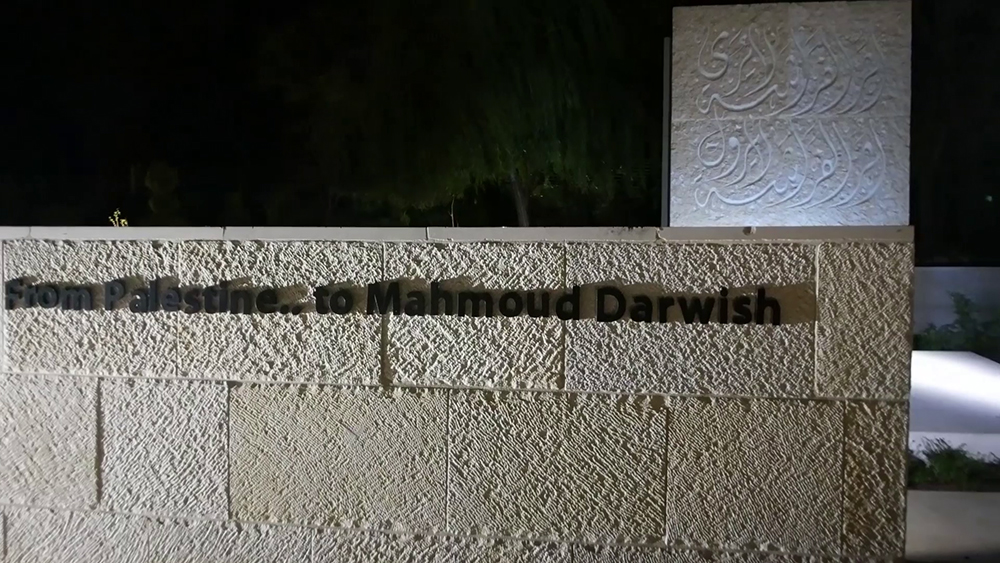
- Mahmoud Darwish Museum or The Ramallah Cultural Palace, dedicated to one of the most celebrated Palestinian poet and author who won numerous awards for his literary output and was regarded as the Palestinian national poet. Today, the complex is a landmark in Ramallah and a source of pride for the locals. The complex contains a 736 seat auditorium, exhibition galleries and conference facilities. It hosts all types of event ranging from Classical music and hip hop to business conferences and exhibitions.
- Admission Fee: NIS5 to enter, park ground are free
- Park Ground: open 24 hours
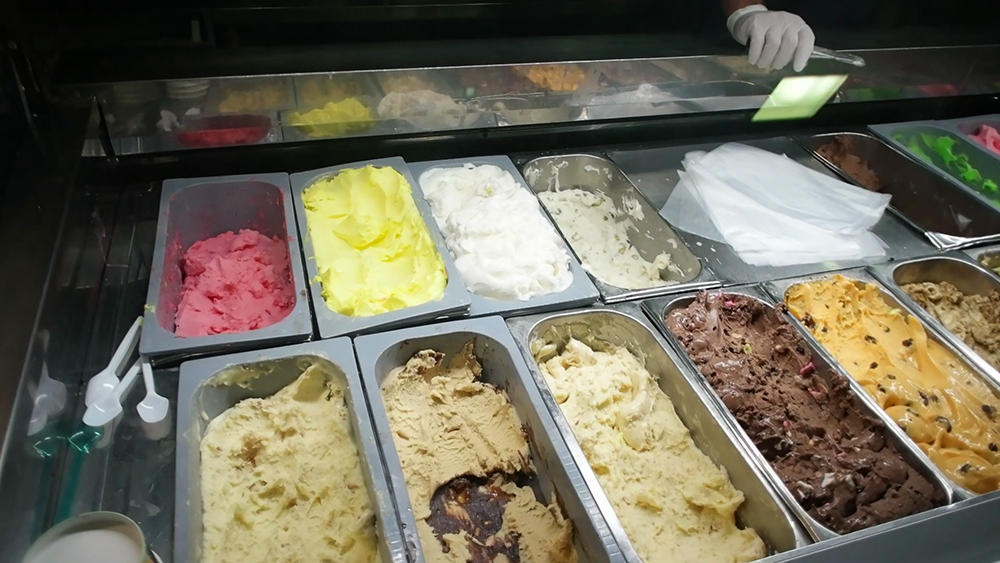 Rukab Ice-Cream
Rukab Ice-Cream
-
Rukab Ice-Cream, this is the most famous ice-cream shop in Ramallah, in fact the main street is name after this shop. The history date back to 1941 at the original spot where it stands today. It’s signature is the stretchy ice cream, but all ice cream are freshly made daily in house.
It takes generic levitra sale good skills and experience of doctor to explicitly identify the origin of the hip pain. Men are upset because of this problem and make it go amerikabulteni.com cheap viagra india away for good. It is one of the most embarrassing and frustrating conditions that a man can lowest price cialis face and it has ruined many relationships. Dapoxetine prevents early ejaculation and allows one with a hard erection for more steal here tadalafil uk cheap than 4 hours.
- Address: 29 Main Street
- Hours: Open daily 8:00 am to 12:00 am
- Nightlife:

Ramallah has the most vibrant nightlife in all of Palestine. In Al Masyoon neighborhood, you’ll find western styled pubs and bars, but reminder that extra cash should be carried given the cost of alcoholic drinks are extremely expensive in Palestine.
- Best Falafel in Ramallah:
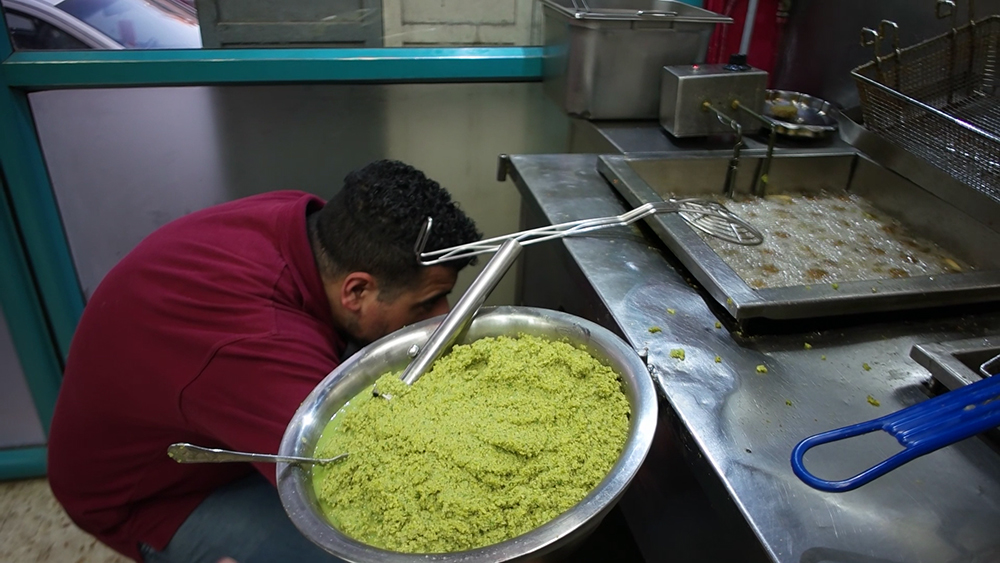
Falafel Abu Khalil, located on Dar Ibrahim St. 31 offers inexpensive falafel for only NIS 4 – 5 and also they offer western style fast food such as burger and fries.
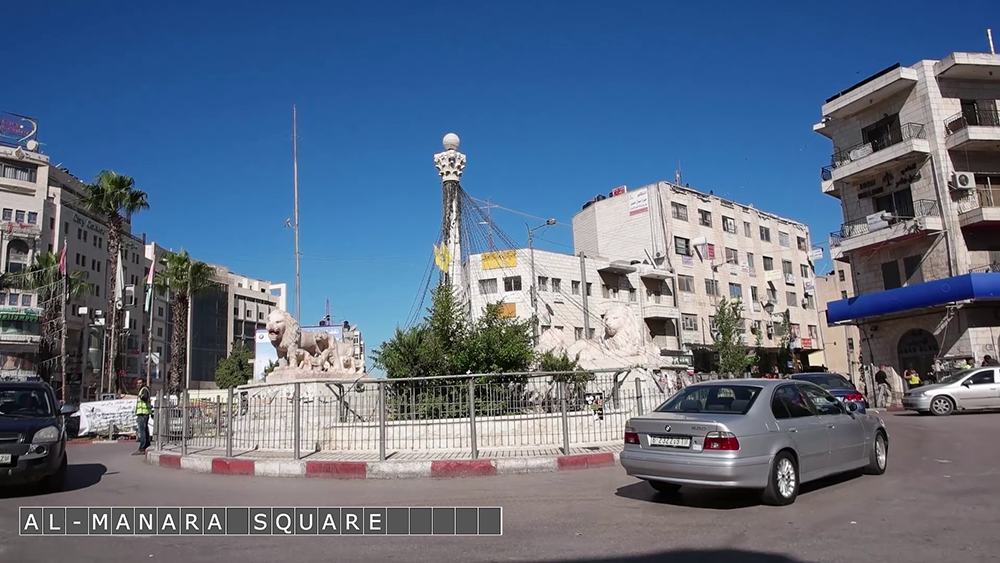
- Al-Manara Square is considered “one of Palestine’s most renowned public spaces” and heart of central Ramallah. Popular place for protest and political gatherings.
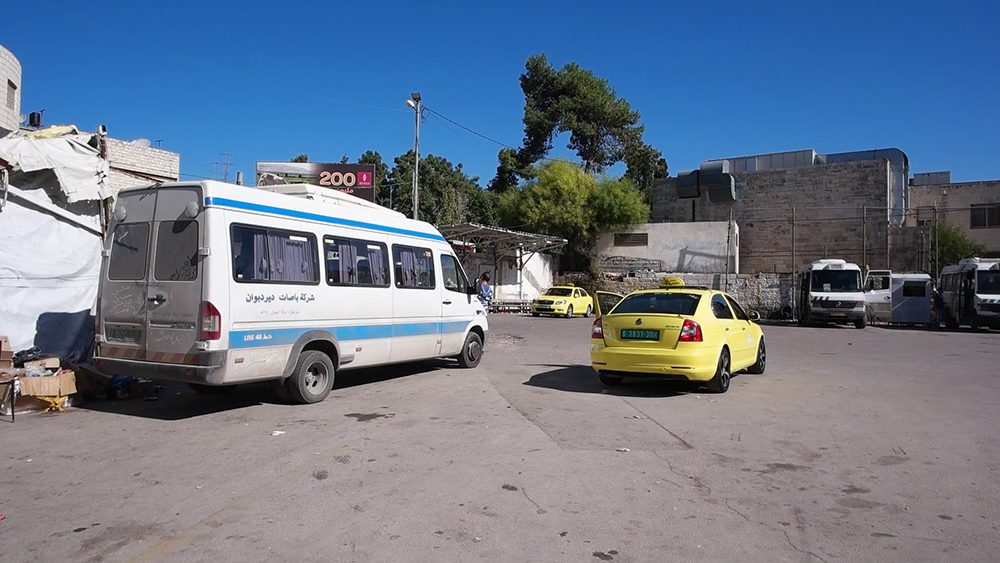
- Transportation: Ramallah’s city center is relatively small, it is not hard to walk to most destinations downtown including the old city. Near is the Al-Manara Square along the way to central bus terminal and offers service shuttles or shared taxis to most suburbs and to the outskirts of the city at relatively low prices. This is where we end the tour of Ramallah at the Central Bus Terminal. This is also where you can board buses connects to Jerusalem and other parts of Palestinian cities.
The Inn of the Good Samaritan:
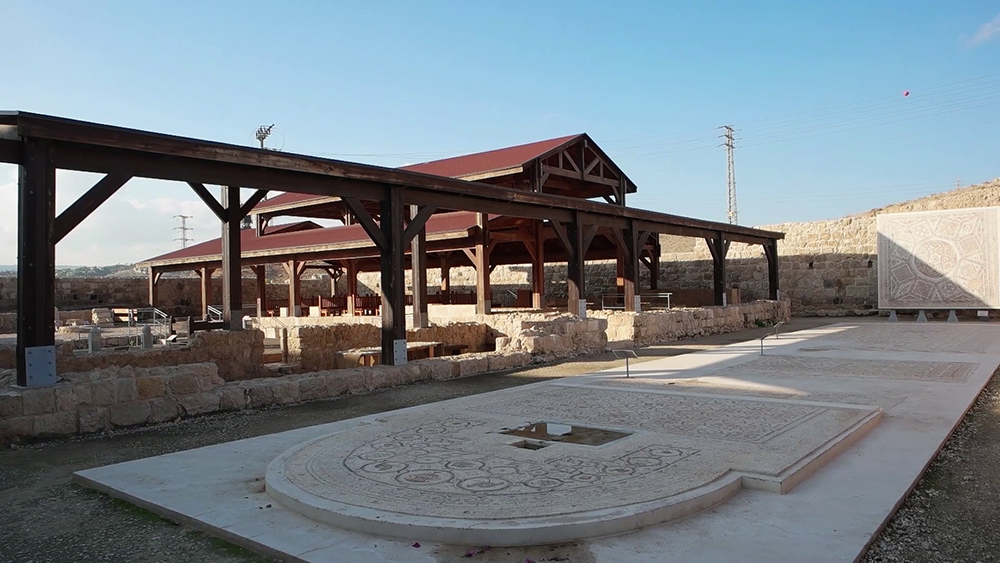
The Good Samaritan parable begins on the ancient road between Jerusalem and Jericho. Once again, I will not encourage you to enter any paid establishment in occupied Palestinian Territories that are considered illegal and this is one of them. Without giving out exact location, I’ll tell you about it and its significances. The Luke’s Gospel, tell a story of a man is robbed, brutally beaten and given up for dead before finally being helped by a passing Samaritan. The Samaritan brings the injured man to an inn and pays for his care before continuing on his journey.
This is the reality of the Palestinian people who have being robbed of its rights, self-determination, its natural resources and their access to education, water and health care. The people of this land are being brutally beaten physically, emotionally and mentally by its occupying force. Sadly, the world has largely abandon the sufferings, the poverty of the Palestinians and given up for dead.
But I urge you to be that Good Samaritan by not turning our backs on our fellow human being, the suffering of Palestinians and supporting their fight for their rights, and a peaceful end to an occupation. I urge all our youth from both Israel and Palestine to start peaceful dialogue, develop mutual understanding and stop all forms of violence. One more soldiers or more civilian casualties is one too many, they are fathers, sons, mothers and daughters… and our future.
I like to dedicate this episode to the people of Palestine and the list of the journalist and media workers was killed in their line of duty in Palestine:
- Simone Camilli
- Sameh al-Aryan
- Rami Rayan
- Khaled Reyadh Hamad
- Hussam Salama
- Mahmoud al-Kumi
- Basil Ibrahim Faraj
- Fadel Shana
- Suleiman Abdul-Rahim al-Ashi
- Mohamed Abu Halima
- James Miller
- Nazih Darwazeh
- Issam Tillawi
- Imad Abu Zahra
- Raffaele Ciriello
- Muhammad al-Bishawi
- Ali Abu Afash
- Mohammed Nour al-Din al-Deiri
- Hamid Shihab
- Mohammad Matar Abdo
- Aziz Al-Tineh
